Inbox and environment news:Issue 491
April 25 - May 1, 2021: Issue 491
Bungan To Newport Coastal Stability Base-Line Flyby
Migrating Shearwaters Coming Ashore On Our Beaches
- the flesh-footed shearwater returns from the seas off Japan and Siberia to the same nesting burrows on Lord Howe Island - this species is listed as vulnerable in NSW
- the sooty shearwater returns from the North Pacific Ocean and Southern Ocean to breed in small numbers on islands south of Port Stephens
- wedge-tailed shearwaters return from the North Pacific to their burrows on islands off the coast of NSW
- short-tailed shearwaters breed on islands along the eastern and southern coastlines of Australia, from the central coast of NSW to Western Australia. [1.]
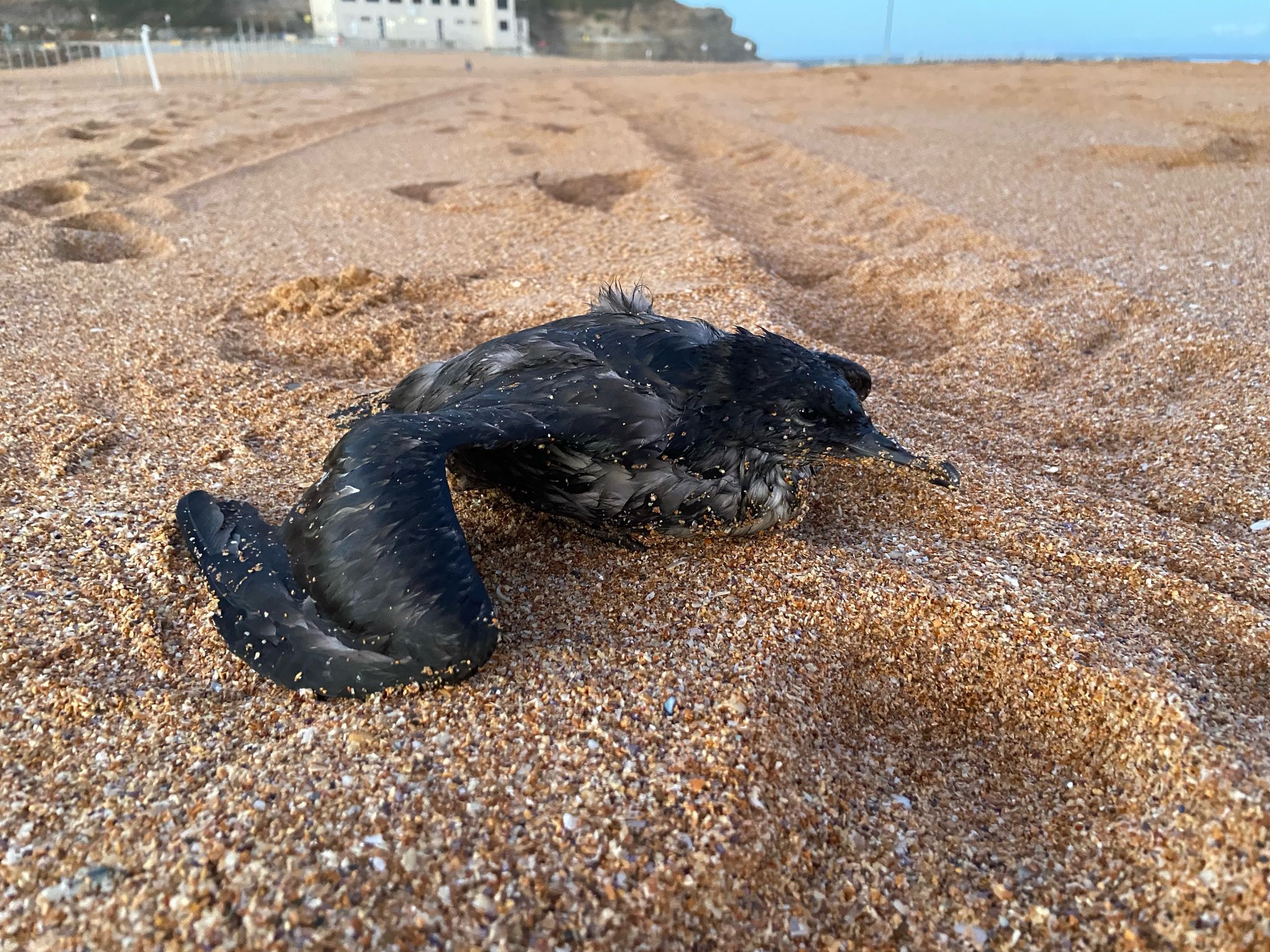
Mona Vale Dunes Bushcare Restoration Update + PNHA Autumn 2021 Newsletter
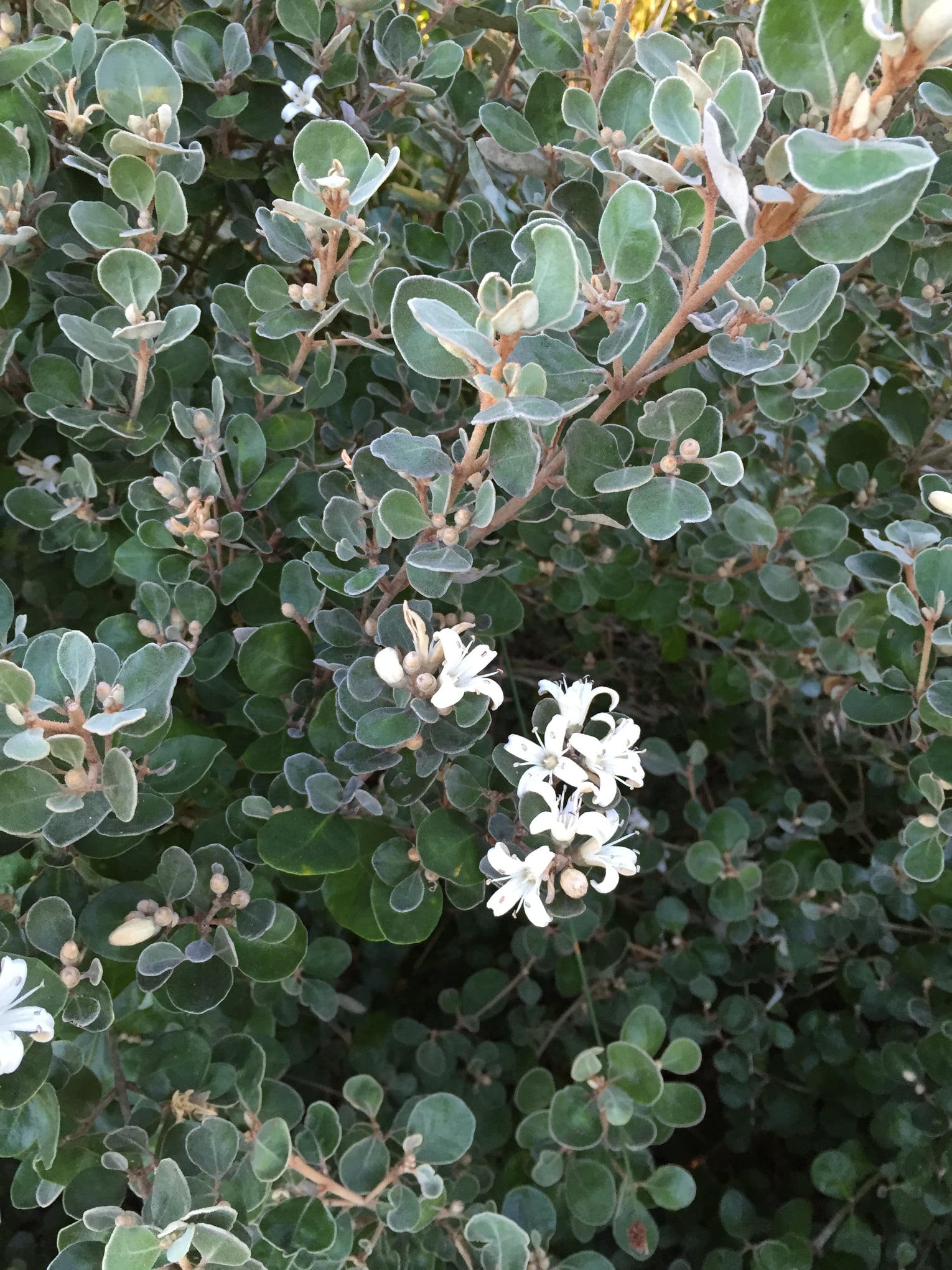
Autumn Edition of PNHA Newsletter - Issue 87
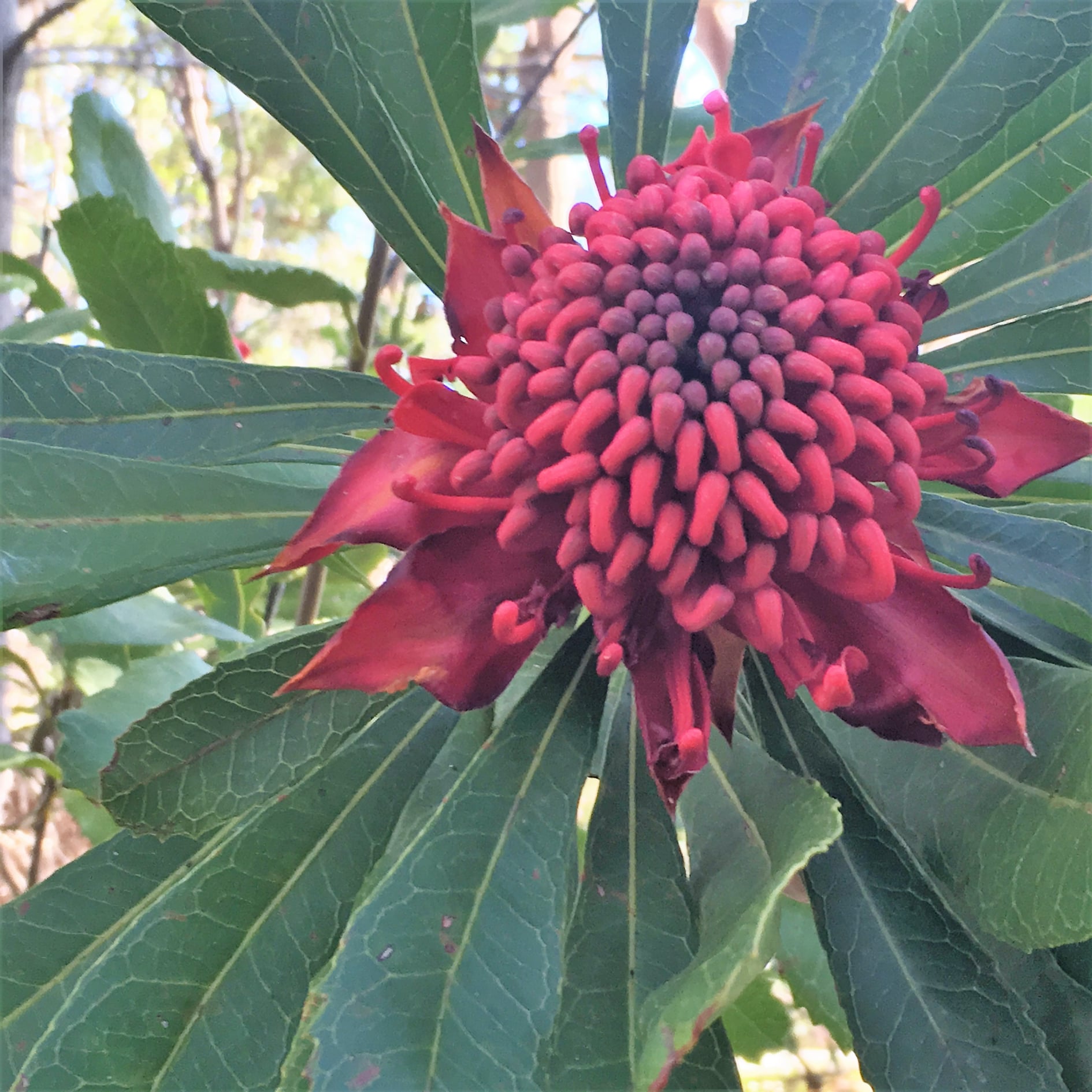
Petition Launched To Further Protect Cabbage Tree Bay
North Head National Park Uprgrade: Give Your Feedback
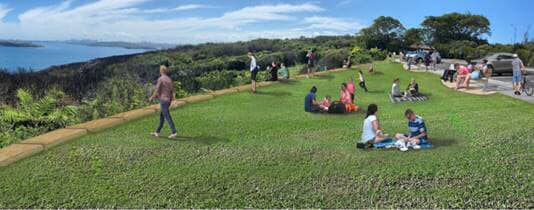 The National Parks and Wildlife Service is pleased to release the concept plans for the North Head Scenic Area upgrade.
The National Parks and Wildlife Service is pleased to release the concept plans for the North Head Scenic Area upgrade.- - reconfiguring the car parks to provide more accessible parking spaces and overflow parking.
- · extended landscaped space for visitors to enjoy views across the harbour.
- · installation of pedestrian crossings and a pedestrian path to improve safety, access and circulation.
- · installation of a new bus stop to the east of the Bella Vista Café.
- · improvements to the entry of the Fairfax Walking Track (currently closed).
International Permaculture Day 2021 At Elanora Heights
 Permaculture Northern Beaches presents: International Permaculture Day - Garden Tours: Sunday May 2nd, 2021
Permaculture Northern Beaches presents: International Permaculture Day - Garden Tours: Sunday May 2nd, 2021Friends Of Narrabeen Lagoon Catchment: Next Forum + May Activities
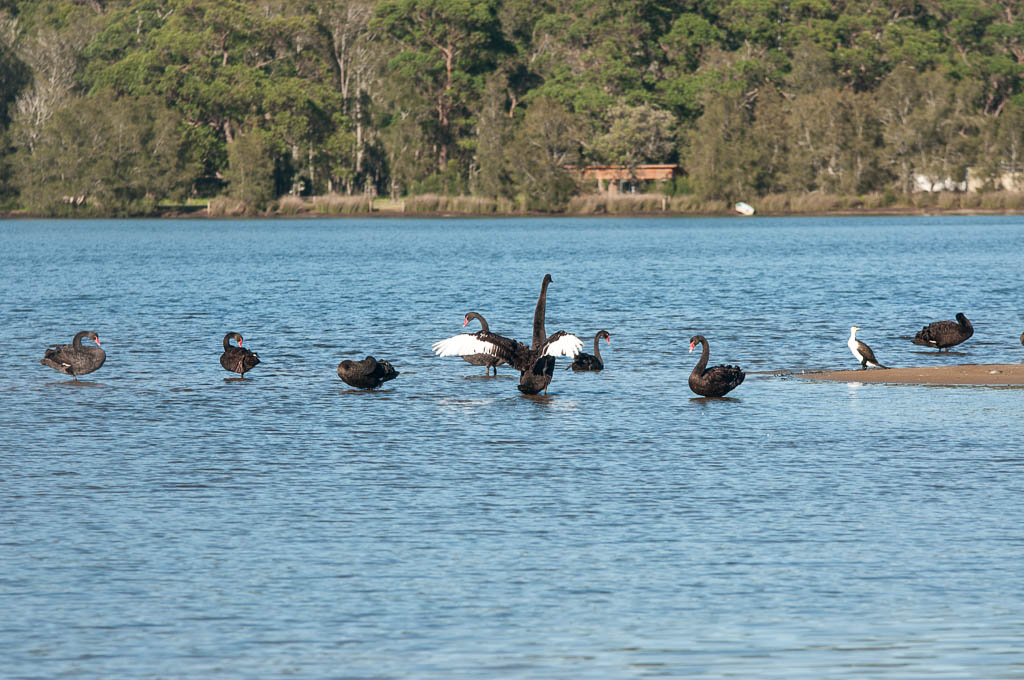
Avalon Community Garden
Avalon Community Garden’s primary purpose is to foster, encourage and facilitate community gardening in Pittwater on a not-for-profit basis.
The garden was started in 2010 by a group of locals who worked in conjunction with the support of Barrenjoey High School to develop a space that could be used by the local community, to grow
vegetables, herbs, plants and flowers, and practice sustainable gardening techniques to benefit its members and the community overall.
The garden has been very successful and has grown and developed since its inception, in terms of its footprint, infrastructure, variety of produce and diversity of members. The garden welcomes new members all year round. Levels of contribution range from multiple times a week, to once a month. Your contribution is always welcome, and it is acknowledged people will have varying levels of commitment.
We encourage you to join and start enjoying the following benefits associated with community gardening:
They provide benefits for individuals and for the community as a whole. Community gardens provide education on gardening, recycling and sustainable use of natural resources.
They develop community connections and provide a means of engaging youth, children, the elderly and the disabled and otherwise marginalised individuals in mutually enjoyable and rewarding activities, thus helping to develop more functional and resilient communities.
People involved in community gardens say they improve wellbeing by increasing physical activity and reducing stress, providing opportunities to interact meaningfully with new friends, give time for relaxation and reflection as well as an opportunity to improve their interconnectedness with nature.
To get involved take a look around the site, join the Facebook group and come along and visit on a Sunday morning between 10 and 12 at the garden within Barrenjoey High School on Tasman Road, North Avalon.
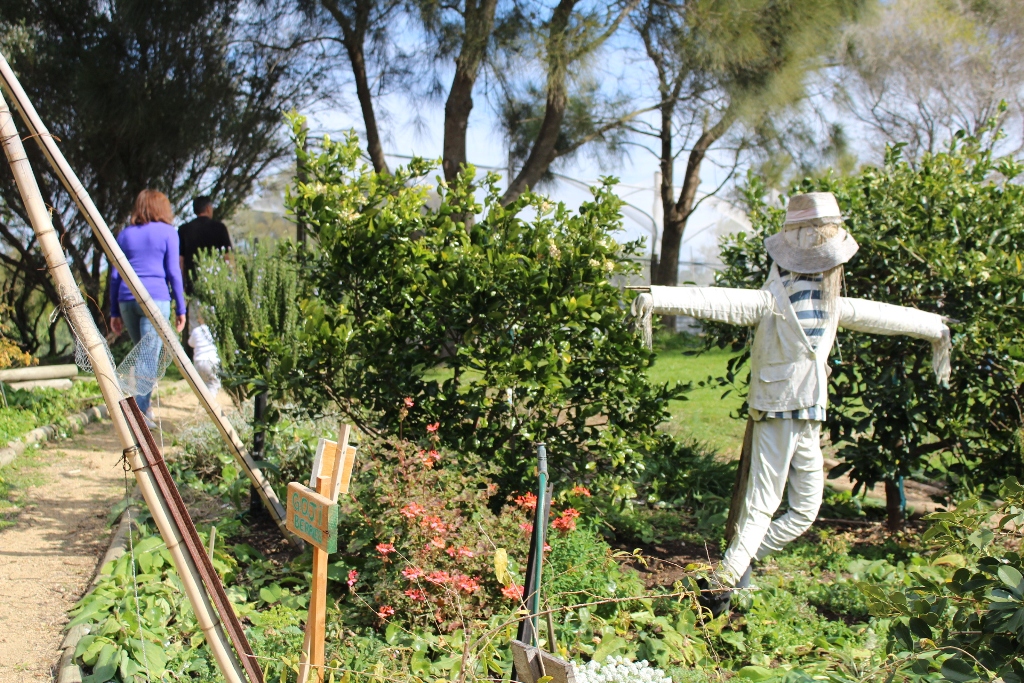
Bushfire Conference June 2021
BirdLife Australia Autumn Survey Time
- Breeding behaviours - If you see a bird carrying nesting materials, sitting on a nest or feeding chicks, let us know. Select the option under 'Breeding Activity' that best matches your observation (remember to keep your distance though from birds who are breeding. We don't want to disturb any nests. Be sure to limit your observations and don't get close enough to scare a bird off it's nest.)
- Aggressive interactions – Let us know if you have observed any species initiate interactions with other birds and whether this interaction could be classed as aggressive – you can do this in the sighting details tab using the specific species interactions option.
- Have you seen any birds feeding on the native plants in your garden? If so – who was dining on what? – you can tell us in the notes section when you record the species you have observed under “sighting details”
- Have any birds been dabbling in some Oscar-worthy acting? – tell us about the weird and wonderful things your backyard birds have been up to you using the notes section in the sighting details tabs.
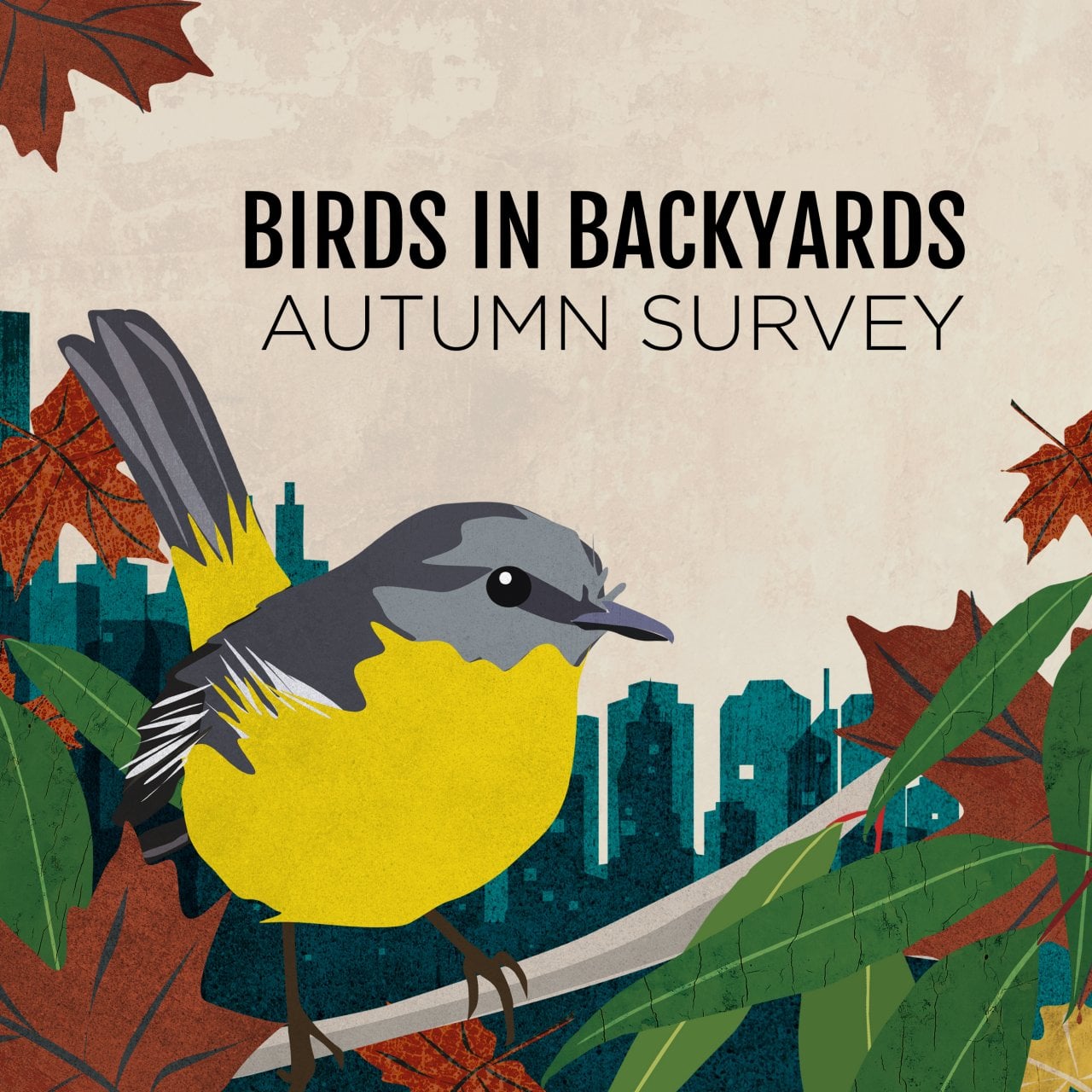
Flying-Fox Heat Stress Targeted In World First
South Korean Government Climate Pledge Increases Pressure On KEPCO To Abandon Bylong Valley Coal Mine Appeal
NSW Government And Shenhua Agree To End Watermark Project
- certainty for local landholders and communities
- prime agricultural farmland to be preserved through the relinquishment of the Shenhua Watermark development consent and exploration licence, and the prohibition of future coal mining projects on this site
- the acquisition of more than 6000 hectares of high biodiversity land to be managed by Local Land Services including the protection of habitat for koalas and other endangered species
- protecting significant Indigenous cultural sites and artefacts
- ensuring that water that would have been taken by the mine can continue to be used for agriculture and other productive uses.
NSW Government To Release Wollar Site And Prohibit Open Cut At Dartbrook
Upper Hunter Landholders Shocked Over Barilaro’s New Coal Land Release Voice Opposition At Meeting
Wollar Is Collateral Damage In Barilaro's Chaotic Coal “Strategy”
Hawkesbury River Water Quality Update
$20 Million To Revolutionise Commonwealth Fisheries
Bushcare In Pittwater
Where we work Which day What time
Avalon
Angophora Reserve 3rd Sunday 8:30 - 11:30am
Avalon Dunes 1st Sunday 8:30 - 11:30am
Avalon Golf Course 2nd Wednesday 3 - 5:30pm
Careel Creek 4th Saturday 8:30 - 11:30am
Toongari Reserve 3rd Saturday 9 - 12noon (8 - 11am in summer)
Bangalley Headland 2nd Sunday 9 to 12noon
Bayview
Winnererremy Bay 4th Sunday 9 to 12noon
Bilgola
North Bilgola Beach 3rd Monday 9 - 12noon
Algona Reserve 1st Saturday 9 - 12noon
Plateau Park 1st Friday 8:30 - 11:30am
Church Point
Browns Bay Reserve 1st Tuesday 9 - 12noon
McCarrs Creek Reserve Contact Bushcare Officer To be confirmed
Clareville
Old Wharf Reserve 3rd Saturday 8 - 11am
Elanora
Kundibah Reserve 4th Sunday 8:30 - 11:30am
 Mona Vale
Mona Vale Mona Vale Beach Basin 1st Saturday 8 - 11am
Mona Vale Dunes 2nd Saturday +3rd Thursday 8:30 - 11:30am
Newport
Bungan Beach 4th Sunday 9 - 12noon
Crescent Reserve 3rd Sunday 9 - 12noon
North Newport Beach 4th Saturday 8:30 - 11:30am
Porter Reserve 2nd Saturday 8 - 11am
North Narrabeen
Irrawong Reserve 2nd Saturday 2 - 5pm
Palm Beach
North Palm Beach Dunes 3rd Saturday 9 - 12noon
Scotland Island
Catherine Park 2nd Sunday 10 - 12:30pm
Elizabeth Park 1st Saturday 9 - 12noon
Pathilda Reserve 3rd Saturday 9 - 12noon
Warriewood
Warriewood Wetlands 1st Sunday 8:30 - 11:30am
Whale Beach
Norma Park 1st Friday 9 - 12noon
Western Foreshores
Coopers Point, Elvina Bay 2nd Sunday 10 - 1pm
Rocky Point, Elvina Bay 1st Monday 9 - 12noon
Gardens And Environment Groups And Organisations In Pittwater
Avalon Golf Course Bushcare Needs You


Pittwater Reserves

Spot the difference: As world leaders rose to the occasion at the Biden climate summit, Morrison faltered
Lesley Hughes, Macquarie University and Will Steffen, Australian National UniversityPrime Minister Scott Morrison overnight addressed a much anticipated virtual climate summit convened by US President Joe Biden, claiming future generations “will thank us not for what we have promised, but what we deliver”.
But what will his government actually deliver?
Morrison’s speech was notable for its stark lack of ambition and a defensive tone at odds with the urgent, front-footed approach of other world leaders. He resisted the peer pressure to enter the global fold on climate action by setting clear goals, saying Australia made only “bankable” emissions-reduction commitments.
Morrison instead pointed to Australia’s “transformative technology targets”. As we will explain below, those targets are small, vague and certainly not “bankable”. And the spending commitments pale in comparison to the past and future cost of extreme weather in Australia.
Expectations of Australia heading into the summit were low – a fact perhaps reflected in the summit’s agenda. Morrison’s address was way down in the running order – he was 21st of 27 speakers. Biden was reportedly not in the room when Morrison spoke. And in an unfortunate glitch, Morrison’s microphone was on mute at the start of his speech.
The summit did deliver some major gains. There was palpable relief as Biden brought the US back to the table on global climate efforts, committing to an emissions-reduction target twice the ambition of Australia’s. Other nations including Japan, Canada and Britain also outlined major new commitments.
But sadly for Australians, the summit revealed the stark contrast in climate policy leadership between Morrison and his international peers.

The World Steps Up
Biden opened the summit by emphasising the urgent need to keep global warming below 1.5℃ This century. Failing to do so, he said, would bring:
More frequent and intense fires, floods, droughts, heat waves, and hurricanes tearing through communities, ripping away lives and livelihoods, increasingly dire impacts to our public health […] We can’t resign ourselves to that future. We have to take action, all of us.
Biden committed the US to a 50-52% emissions reduction by 2030 compared with 2005 levels. Other notable emissions-reduction pledges included:
Japan: 46-50% by 2030 (from 2013 levels)
European Union: 55% cut by 2030 (from 1990 levels)
Canada: 40-45% by 2030 (from 2005 levels)
United Kingdom: 78% by 2035 (from 1990 levels).
There were hopes Morrison would use the summit to announce Australia would finally join more than 100 countries to set an emissions target of net-zero by 2050. (Australia’s current emissions trajectory has us on track to get to net-zero in the year 2167).
But Morrison dashed those hopes early, telling world leaders: “For Australia, it is not a question of if or even by when for net-zero, but importantly how”.
He pointed to the government’s Technology Investment Roadmap, including A$20 billion to bring down the cost of clean hydrogen, green steel, energy storage and carbon capture. He also spoke of a goal to produce clean hydrogen for A$2 a kilogram, and his dream that Australia’s hydrogen industry would one day rival the scale of California’s Silicon Valley.
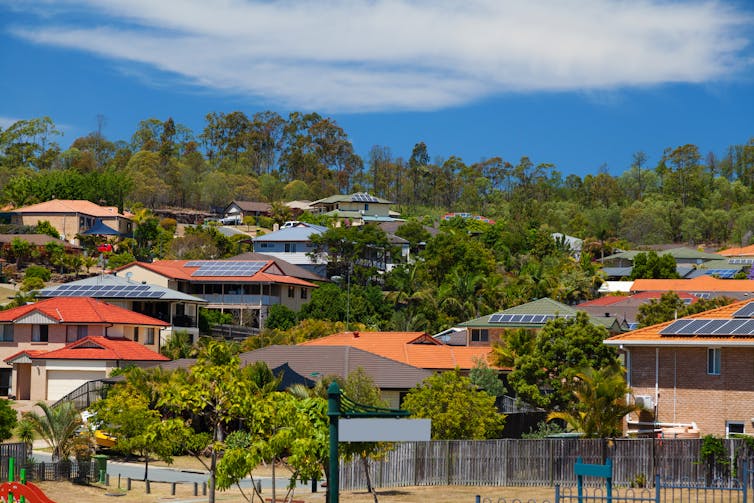
Will Technology Save Us? Not Likely
Earlier this week, Morrison set the scene for his address by announcing a suite of technology funding commitments. Let’s take a closer look at them.
On Wednesday Morrison announced A$540 million for regional hydrogen hubs and carbon-capture and storage (CCS) projects. Some A$275 million will be committed to seven hydrogen hubs in regional areas over five years – that’s about A$7.8 million per hub each year.
It’s hard to see this buying much more than a plan on a piece of paper. Further, there’s little detail on how much will be spent on clean vs dirty hydrogen – that is, hydrogen generated from renewables vs fossil fuels. However the proposed location of some of these hubs in fossil-fuel rich areas, such as the Latrobe Valley and Hunter Valley, does not bode well.
A further A$263.7 million over ten years will fund CCS projects. Since 2003, the Australian government has spent more than A$1 billion on CCS projects, with very little to show for it.
Globally, CCS has been criticised as unproven and expensive, simply designed to extend the life of fossil fuel industries.
Read more: 'Failure is not an option': after a lost decade on climate action, the 2020s offer one last chance
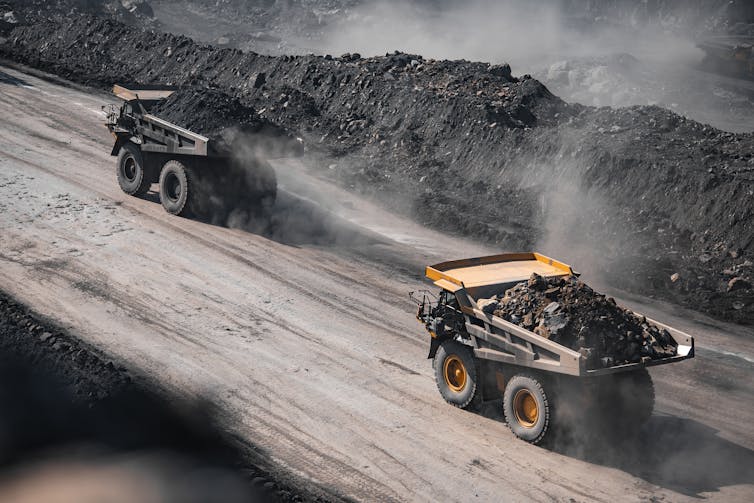
The third tranche of funding, announced on Thursday, is A$566 million for research partnerships with other countries for new technology such as green steel, small modular nuclear reactors and soil carbon storage. There was little detail in the announcement, so for now it remains rather hypothetical.
In sum, the government will spend a relatively small amount on hydrogen production and CCS, spread wafer thin in various regional areas (and at least some of it subsidising fossil fuels), plus hypothetical funding for research.
Compare this to the A$35 billion cost of extreme weather disasters in Australia between 2010 and 2019, as detailed in this Climate Council report.
More recently, the New South Wales government estimated the potential cost of last month’s devastating floods at A$2 billion. A report by the NSW Treasury estimated by 2061, future economic costs of climate impacts in four key risk areas (bushfires, sea level rise, heatwaves and agricultural production) could reach up to A$17.2 billion a year – and this is just for NSW.
Read more: Cyclone Seroja just demolished parts of WA – and our warming world will bring more of the same
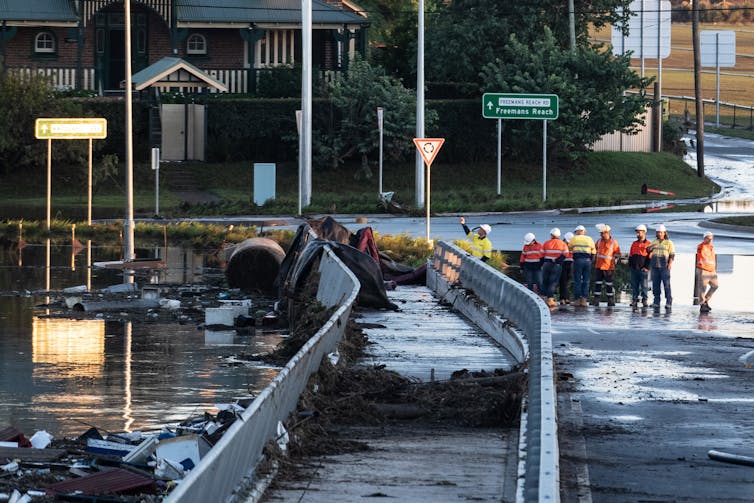
A Tale Of Two Leaders
Morrison told world leaders Australia would update its emissions-reduction target ahead of the Glasgow climate summit later this year. The current target – a 26-28% cut by 2030, based on 2005 levels – is broadly viewed as woefully inadequate.
Any increased ambition would be long overdue. However, more broadly, the contrast on climate policy between Morrison and Biden could not be clearer. Biden used the summit to tell world leaders:
Your leadership on this issue is a statement to the people of your nation and to the people of every nation, especially our young people, that we’re ready to meet this moment […] We really have no choice. We have to get this done.
Morrison, depressingly, showed little sign of hearing that message.![]()
Lesley Hughes, Professor, Department of Biological Sciences, Macquarie University and Will Steffen, Emeritus Professor, Fenner School of Environment & Society, Australian National University
This article is republished from The Conversation under a Creative Commons license. Read the original article.
Scott Morrison can't spin this one: Australia's climate pledges at this week's summit won't convince the world we're serious
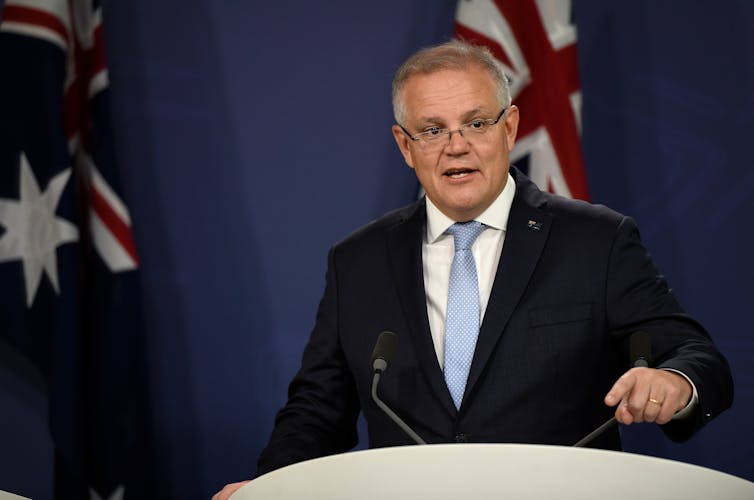
Days out from a much-anticipated climate summit convened by US President Joe Biden, the federal government has moved to position itself as serious about emissions reduction.
On Wednesday Prime Minister Scott Morrison pledged A$539 million to advance two emerging technologies: clean hydrogen and carbon-capture and storage (CCS).
When Morrison takes the virtual global stage this week, we can expect he’ll point to this investment and other dubious climate policies, as well as roll out carefully chosen facts to paint the government in the best possible light.
Such an approach may appease the Coalition party room, and perhaps some voters. But most Australians want real action on climate change. And the rest of the world, accustomed to Australia’s shifty climate stance, is unlikely to fall for Morrison’s diversion tactics.
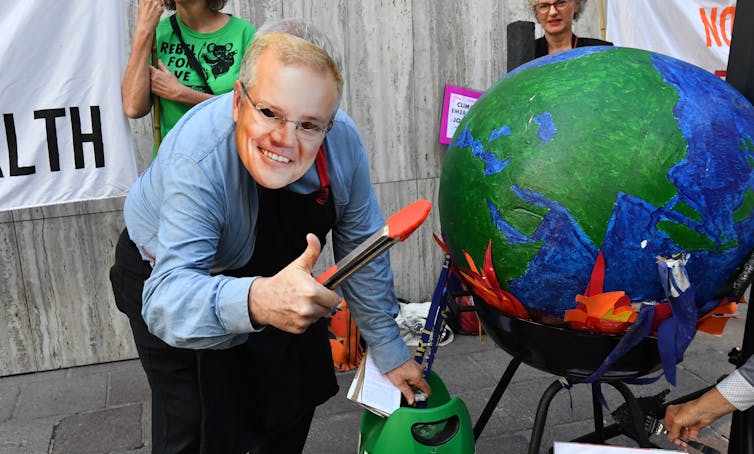
A Perfect Storm
Biden has invited 40 world leaders to the virtual summit, which begins on Thursday night our time. He is expected to announce a significant new emissions reduction commitment for the US, and call on other nations to ramp up climate action.
Australia goes into the meeting firmly on the back foot. It’s widely viewed as a laggard on emissions reduction and in 2020 ranked last on climate policy among 57 countries and the European Union.
Australia’s key coal export markets in China, South Korea and Japan have all recently outlined a timetable for net zero emissions, while the European Union committed to this target long ago.
Morrison says a net-zero goal is his preference but has not yet committed to it.
Australia will also face pressure to up its climate game while negotiating post-Brexit trade deals with the UK and EU. The EU has already announced plans to introduce a carbon levy on all imports.
Read more: Scott Morrison has embraced net-zero emissions – now it's time to walk the talk
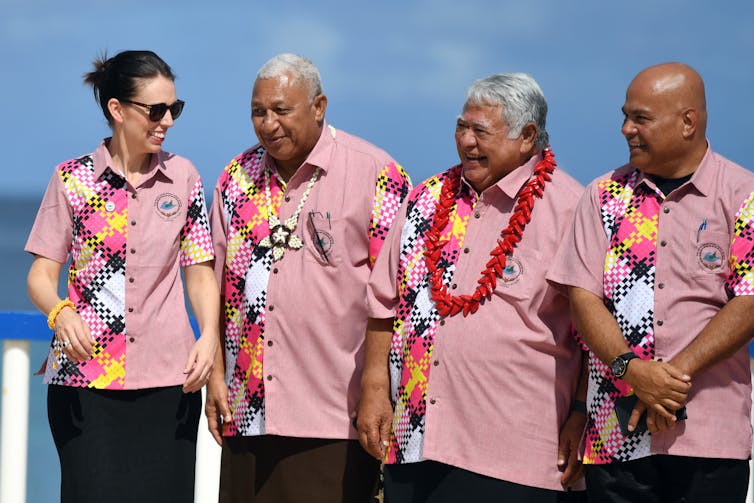
Closer to home, Australia’s Pacific neighbours – for whom climate change is an issue of survival – have demanded Australia transition away from fossil fuels. Australia committed to increase its diplomatic engagement with the region through the so-called Pacific Step-Up, but there are clear signs our poor climate action performance is undermining this pledge.
Ahead of the summit, the Morrison government also faces domestic pressure on climate policy. Even before the devastating Black Summer bushfires, a survey found Australians considered climate change as the most serious threat to the national interest. And Lowy polls consistently point to public support for strong climate action.
Even Australian-based industry groups and businesses have called for a transition away from fossil fuels. This includes the traditionally conservative National Farmers Federation, which is calling for a net-zero commitment.
But any attempt by Morrison to embrace a stronger climate stance will be met with opposition from some in the Coalition party room. Queensland Nationals senator Matt Canavan sent a public warning to the Prime Minister on Tuesday, tweeting:
Morrison’s Smoke Screen
So where does this leave Morrison as he prepares to address the leaders summit? As US climate scientist Michael Mann pointed out in The Guardian, the Morrison government appears to be deploying a smoke-and-mirrors approach – loudly promoting policies such as its low-emissions technology roadmap “to distract from their clear record of inaction on climate”.
The announcement of A$539 million for clean hydrogen and carbon-capture and storage (CCS) seems proof of that. And there are plenty of reasons to be concerned if the government sees this spending as a core pillar of its response to the climate emergency.
Carbon capture and storage requires significant amounts of water for cooling. It’s extremely expensive to establish and run, and only applies to electricity generation. The method is unproven at scale, and still releases substantial CO₂. CCS also involves subsidising the fossil fuel sector, rather than investing funds into new forms of renewable energy.
Hydrogen is potentially a clean energy source, but only when produced using renewable electricity. The government has left the door open to supporting hydrogen produced using fossil fuels, where the carbon is captured and stored.
There are also concerns Australia has radically overestimated the likely extent of the export market for hydrogen.
We can expect Australia to trot out other dubious claims to climate action at this week’s summit. Morrison this week told a business dinner that “domestic emissions have already fallen by 36% from 2005 levels” – a figure that conveniently omits fugitive emissions from coal and gas produced for export.
And Morrison is sure to spruik the decline in Australia’s per capita emissions. But as I’ve pointed out before, our emissions per capita remain disproportionately high, even among key trading partners.
The World Is Watching
The technology funding is Morrison’s attempt to walk the line between competing pressures. It throws a lifeline to the fossil fuel industry and placates internal party dissent, while attempting to appear to the rest of the world that Australia is acting on climate change.
But the announcement is telling for what it isn’t: a clear commitment to achieving net zero emissions by the middle of the century, or an increase in its Paris Agreement targets – currently set at a 26-28% emission cut between 2005 and 2030. Reports suggest Morrison is not expected to make a concrete pledge on either policy at the summit.
But public concern, international action and market forces are all pushing in the opposite direction to the Morrison government. This creates a sense the government’s position on climate change simply isn’t sustainable.
And this week’s summit puts Australia under global scrutiny like never before. As US Secretary of State Antony Blinken warned this week:
Our diplomats will challenge the practices of countries whose action – or inaction – is setting the world back […] When countries continue to rely on coal for a significant amount of their energy, or invest in new coal factories, or allow for massive deforestation, they will hear from the United States and our partners about how harmful these actions are.
It appears the US, at least, won’t be convinced on the sincerity of the Morrison government’s climate concern, or the adequacy of its actions.
Read more: 'Failure is not an option': after a lost decade on climate action, the 2020s offer one last chance ![]()
Matt McDonald, Associate Professor of International Relations, The University of Queensland
This article is republished from The Conversation under a Creative Commons license. Read the original article.
Rainforest giants with rare autumn displays: there’s a lot more to Australia’s red cedar than timber
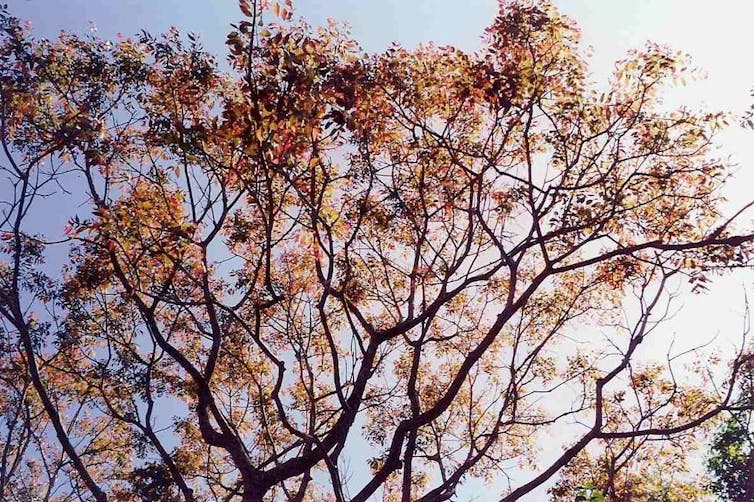
Native deciduous trees are rare in Australia, which means many of the red, yellow and brown leaves we associate with autumn come from introduced species, such as maples, oaks and elms.
One native tree, however, stands out for its leaves with soft autumnal hues that drop in March and April: Australia’s red cedar. Don’t be fooled by its common name — red cedar is not a cedar at all, but naturally grows in rainforests throughout Southeast Asia and Australia.
You may be more familiar with its timber, which I’ve been acquainted with all of my life. My grandmothers had cedar chests of drawers they had inherited from their mothers or grandmothers, and I had assumed they were made from one of the Northern hemisphere cedar species. The wood still smelled of cedar after all this time in family homes – a scent I associate with grandparents and country homes.
By the time I was given one of these chests to restore, I knew much more about the tree and valued the chest of drawers all the more. So, with autumn putting a spotlight on Australian red cedars, let’s look at this species in more detail.
Majestic Giants Of The Rainforest
I first encountered red cedar trees in the sub-tropical rainforests of Queensland and New South Wales in the 1980s. Then, its scientific name was called Cedrela toona and later Toona australis. Now, it’s recognised as Toona ciliata.
The various names reflect a taxonomic history in which the Australian species was once regarded as being separate from its Asian relatives, but all are now considered one.
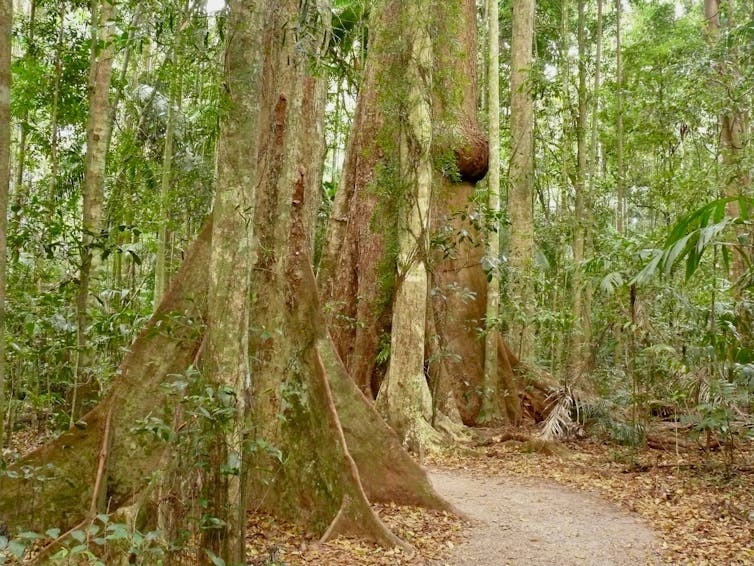
The trees are awe-inspiring. Under the right conditions, it can grow to 60 metres tall (occasionally more) with a trunk diameter of up to 7m.
After losing its foliage in autumn, the new foliage in spring often has an attractive reddish tinge. In late spring it has small (5 milimetres) white or pale pink flowers, but they usually go unnoticed in the rainforest because of their height or the density of other tree canopies growing beneath.
Older red cedars have wonderful buttresses at the base of their trunk, a characteristic shared by many tall tropical trees. These buttresses have long been considered an advantage for species that can emerge above the canopy of a rainforest where winds are much stronger, with the buttresses and expanded root systems providing greater strength and resistance to the wind.
These buttresses also greatly increase the surface area of the base of the trees exposed to air, which facilitates the uptake of extra oxygen as the activity of micro-organisms in the soil can leave it oxygen-depleted.
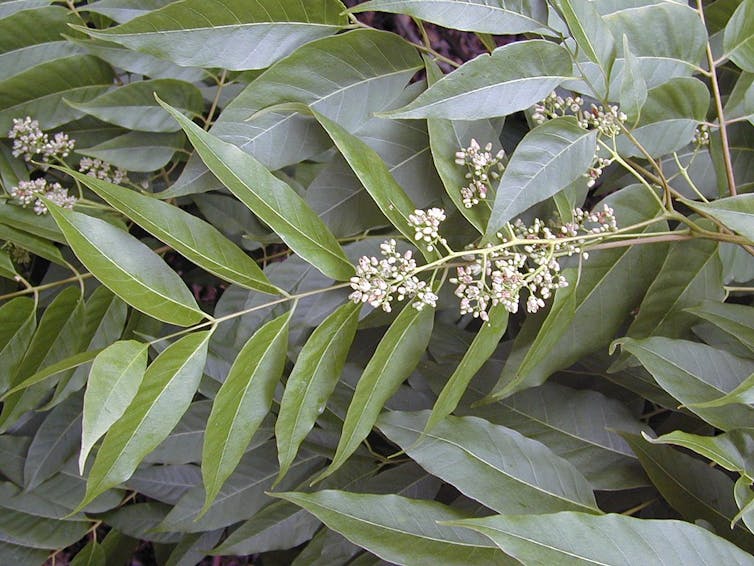
Logged To Near Extinction
With a wide distribution throughout Asia and Australia, its uses in ancient times were many and varied. In traditional medicine, bark was used or digestive remedies as well as wound dressing and its resin was used for treating skin conditions.
Dyes, oils and tannins used for preparing leather could also be extracted by boiling various plant parts. Today the wood is used for culturing shiitake mushrooms, which are much in demand in restaurants.
But the recent history of red cedar is a typically sad colonial tale. The species belongs to the same family as mahogany (Meliaceae) and, not surprisingly, was exploited for its timber from the early days of colonisation.
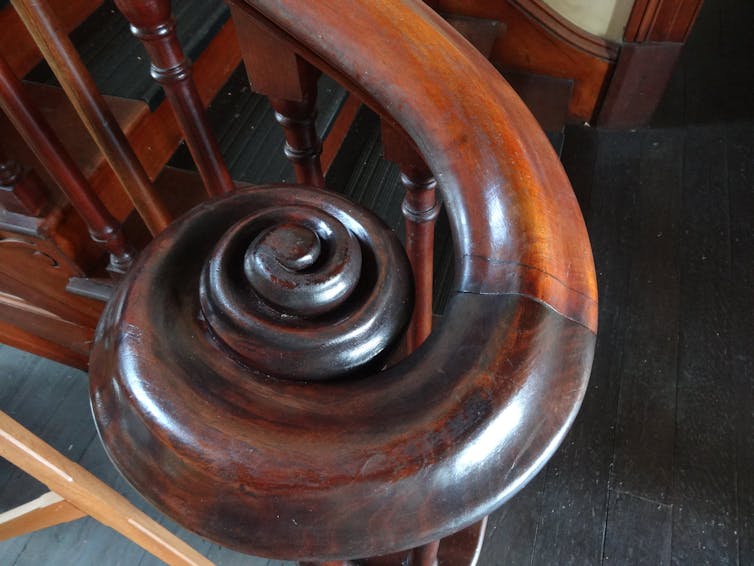
The timber is durable, lightweight and suitable for naval use and so was very heavily logged, right along the east coast of Australia from the early 1800s until the early 20th century.
The rich deep red colour of its timber and the fact it was soft and easily worked meant it was used for furniture, ornate carvings in public buildings, town halls and parliaments, such as the State Library in Melbourne. It was also used for implements and handles, and for sailing and racing boats.
Read more: The secret life of puddles: their value to nature is subtle, but hugely important
You’ve probably had a close encounter with the lovely red banisters on some of these old buildings that were made of red cedar, often darkened under the patina of so many hands.
The once common and widespread species was logged almost to extinction along the east coast by the mid-1900s, and to the point of practical commercial extinction with little timber available to industry by the 1960s.
So valued was the timber that in the late 1970s, a plan was hatched to remove red cedar from Queensland National Park rainforests using helicopters. Luckily, the idea did not fly and so some great trees persist. The species has a conservation status of concern, but is not considered to be endangered at present.
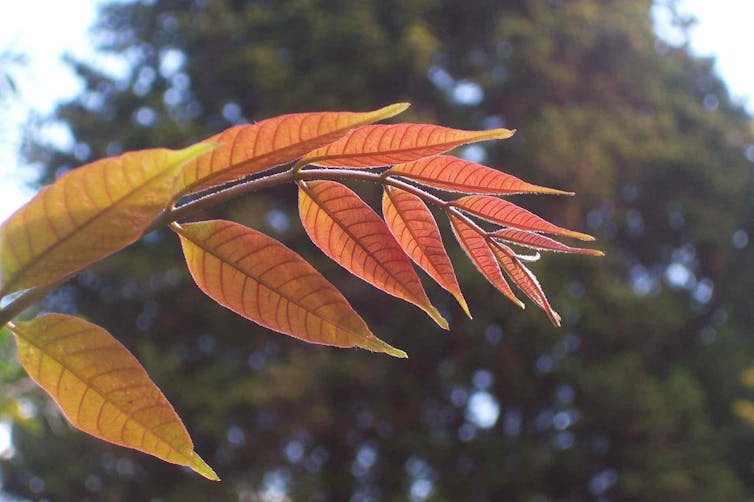
A Terrible Pest
The fact they are deciduous makes them potentially very interesting and useful for horticultural use, but that potential remains largely unrealised. And given the value and quality of its timber, you may be wondering why it’s not being grown in plantations across the continent.
The reason is a native moth called the cedar tip moth (Hypsipyla robusta), which lays its eggs on the main growing shoot of the tree. When the eggs hatch the larvae bore down the shoot, which not only results in shoot dieback but also causes the trees to develop multiple stems and branches which reduce its timber value.
Read more: White cedar is a rare bird: a winter deciduous Australian tree
Despite this, they are still planted as a quick-growing ornamental tree for their shade in other parts of the world, such Hawaii and Zimbabwe.
The moths are attracted to the scent of the tree, so they’re very difficult to control. The moth does not attack the tree in South America, for instance, because the moth has not established there, so there are large plantations of red cedar in Brazil.
It’s an interesting reminder: often it’s the little things in ecology that can affect success, or failure. When we humans meddle without knowledge, things don’t necessarily go to plan, usually to our cost.
Read more: Why climate change will dull autumn leaf displays ![]()
Gregory Moore, Doctor of Botany, The University of Melbourne
This article is republished from The Conversation under a Creative Commons license. Read the original article.
Satellites reveal ocean currents are getting stronger, with potentially significant implications for climate change

Scientists already know the oceans are rapidly warming and sea levels are rising. But that’s not all. Now, thanks to satellite observations, we have three decades’ worth of data on how the speeds of ocean surface currents are also changing over time.
In research published today in the journal Nature Climate Change we detail our findings on how ocean currents have become more energetic over large parts of the ocean.
What Are Ocean Eddies?
If you looked down at the ocean from a bird’s eye view, you would see some mesmerising circular motions in the water. These features are called “ocean eddies”. They give the ocean an artistic flavour, reminiscent of Van Gogh’s Starry Night.

Eddies span somewhere between 10 and 100 kilometres across. They’re found all over the oceans. Certain regions, however, are particularly rich in eddies.
These include the Gulf Stream in the North Atlantic, the Kuroshio Current in the North Pacific, the Southern Ocean which surrounds Antarctica and, closer to Australia, the East Australian Current — made famous by the film Finding Nemo.
Ocean eddies are an integral part of ocean circulation. They move warm and cold waters from one location to others. They mix heat, carbon, salt and nutrients, and affect ocean conditions both regionally and globally.
Read more: An ocean like no other: the Southern Ocean's ecological richness and significance for global climate
Satellites Constantly Watch The Ocean
One way we monitor movement on the ocean’s surface is by using specialised, powerful satellites orbiting Earth. Although these satellites are thousands of kilometres above us, they can detect even just a few centimetres of change in the sea’s surface elevation.
Then, through data analysis, we can take the change in sea surface elevation and translate it into ocean flow speeds. This can then tell us how “energetic” an ocean eddy is.
By carefully analysing satellite observations, our team discovered clear changes in the distribution and strength of ocean eddies. And these changes have never been detected before.
How Eddies Have Been Changing
Using available data from 1993 until 2020, we analysed changes in the strength of eddies across the globe. We found regions already rich in eddies are getting even richer! And on average, eddies are becoming up to 5% more energetic each decade.
One of the regions we found with the biggest change is the Southern Ocean, where a massive 5% increase per decade was detected in eddy activity. The Southern Ocean is known to be a hotspot for ocean heat uptake and carbon storage.
Until recently, scientists could only observe changes in ocean eddies by using either sparse ocean measurements or the limited satellite record. The satellite record has only just become long enough for experts to draw robust conclusions about the likely longer-term trends of eddy behaviour.
Why Is This Important?
Ocean eddies play a profound role in the climate by regulating the mixing and transport of heat, carbon, biota and nutrients in the oceans. Thus, our research may have far-reaching implications for future climate.
Scientists have known for decades that eddies in the Southern Ocean affect the overturning circulation of the ocean. As such, changes of the magnitude observed for eddies could impact the rate at which the ocean draws down heat and carbon.
But eddies are often not taken into account in climate predictions of a warming world. Since they are relatively small, they remain practically “invisible” in current models used to project future climate.
The impact of eddies is therefore either not resolved in climate projections, or is severely underestimated. This is particularly concerning in light of our discovery eddies are becoming more energetic.
Our research emphasises how crucial it is to incorporate ocean eddies into future climate projections. If we don’t, we could be overlooking a critical detail.
Read more: How an alien seaweed invasion spawned an Antarctic mystery ![]()
Navid Constantinou, Research Fellow, Australian National University; Adele Morrison, Research Fellow, Australian National University; Andrew Kiss, Research fellow, Australian National University; Andy Hogg, Professor, Australian National University; Josué Martínez Moreno, P.h.D. candidate, Australian National University, and Matthew England, Australian Research Council Laureate Fellow; Deputy Director of the Climate Change Research Centre (CCRC); Chief Investigator in the ARC Centre of Excellence in Climate System Science, UNSW
This article is republished from The Conversation under a Creative Commons license. Read the original article.
New Shorebirds WingThing For Youngsters Available To Download
A Shorebirds WingThing educational brochure for kids (A5) helps children learn about shorebirds, their life and journey. The 2021 revised brochure version was published in February 2021 and is available now. You can download a file copy here.
If you would like a free print copy of this brochure, please send a self-addressed envelope with A$1.10 postage (or larger if you would like it unfolded) affixed to: BirdLife Australia, Shorebird WingThing Request, 2-05Shorebird WingThing/60 Leicester St, Carlton VIC 3053.

 Shorebird Identification Booklet
Shorebird Identification Booklet
The Migratory Shorebird Program has just released the third edition of its hugely popular Shorebird Identification Booklet. The team has thoroughly revised and updated this pocket-sized companion for all shorebird counters and interested birders, with lots of useful information on our most common shorebirds, key identification features, sighting distribution maps and short articles on some of BirdLife’s shorebird activities.
The booklet can be downloaded here in PDF file format: http://www.birdlife.org.au/documents/Shorebird_ID_Booklet_V3.pdf
Paper copies can be ordered as well, see http://www.birdlife.org.au/projects/shorebirds-2020/counter-resources for details.
Download BirdLife Australia's children’s education kit to help them learn more about our wading birdlife
Shorebirds are a group of wading birds that can be found feeding on swamps, tidal mudflats, estuaries, beaches and open country. For many people, shorebirds are just those brown birds feeding a long way out on the mud but they are actually a remarkably diverse collection of birds including stilts, sandpipers, snipe, curlews, godwits, plovers and oystercatchers. Each species is superbly adapted to suit its preferred habitat. The Red-necked Stint is as small as a sparrow, with relatively short legs and bill that it pecks food from the surface of the mud with, whereas the Eastern Curlew is over two feet long with a exceptionally long legs and a massively curved beak that it thrusts deep down into the mud to pull out crabs, worms and other creatures hidden below the surface.
Some shorebirds are fairly drab in plumage, especially when they are visiting Australia in their non-breeding season, but when they migrate to their Arctic nesting grounds, they develop a vibrant flush of bright colours to attract a mate. We have 37 types of shorebirds that annually migrate to Australia on some of the most lengthy and arduous journeys in the animal kingdom, but there are also 18 shorebirds that call Australia home all year round.
What all our shorebirds have in common—be they large or small, seasoned traveller or homebody, brightly coloured or in muted tones—is that each species needs adequate safe areas where they can successfully feed and breed.
The National Shorebird Monitoring Program is managed and supported by BirdLife Australia.
This project is supported by Glenelg Hopkins Catchment Management Authority and Hunter Local Land Services through funding from the Australian Government’s National Landcare Program. Funding from Helen Macpherson Smith Trust and Port Phillip Bay Fund is acknowledged.
The National Shorebird Monitoring Program is made possible with the help of over 1,600 volunteers working in coastal and inland habitats all over Australia.
The National Shorebird Monitoring program (started as the Shorebirds 2020 project initiated to re-invigorate monitoring around Australia) is raising awareness of how incredible shorebirds are, and actively engaging the community to participate in gathering information needed to conserve shorebirds.
In the short term, the destruction of tidal ecosystems will need to be stopped, and our program is designed to strengthen the case for protecting these important habitats.
In the long term, there will be a need to mitigate against the likely effects of climate change on a species that travels across the entire range of latitudes where impacts are likely.
The identification and protection of critical areas for shorebirds will need to continue in order to guard against the potential threats associated with habitats in close proximity to nearly half the human population.
Here in Australia, the place where these birds grow up and spend most of their lives, continued monitoring is necessary to inform the best management practice to maintain shorebird populations.
BirdLife Australia believe that we can help secure a brighter future for these remarkable birds by educating stakeholders, gathering information on how and why shorebird populations are changing, and working to grow the community of people who care about shorebirds.
To find out more visit: http://www.birdlife.org.au/projects/shorebirds-2020/shorebirds-2020-program
Aussie Bread Tags Collection Points

WHO Engages Western Sydney Uni Researchers To Help Create Age-Friendly Communities

Supporting Older Australians With Cancer
Trial Connects Older Australians And Pre-Schoolers To Improve Mental Health
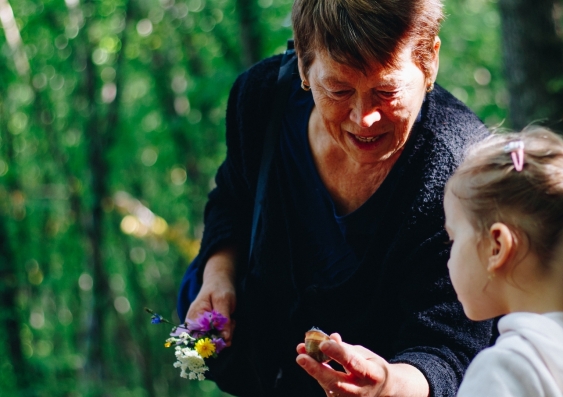
Flagship Strategy To Support NSW Veterans
 The service and sacrifices of veterans and their transition from military to civilian life are in focus with the NSW Government launching the State’s first whole-of-government strategy, developed using insights and expertise from ex-serving personnel and their families.
The service and sacrifices of veterans and their transition from military to civilian life are in focus with the NSW Government launching the State’s first whole-of-government strategy, developed using insights and expertise from ex-serving personnel and their families.What to drink with dinner to get the most iron from your food (and what to avoid)

A drink with your breakfast, lunch or dinner can make your meal more enjoyable. But have you considered whether your drink of choice may affect the way your body absorbs the nutrients in your food?
Dietary factors that can increase the uptake of other nutrients are called enhancers, while those that can reduce the uptake of other nutrients are called inhibitors, or anti-nutrients.
One of the most common nutrient deficiencies worldwide is iron, and can result in a condition called iron deficiency anaemia.
So if you’re looking to increase your iron levels, it’s worth thinking not just about what you’re eating — but what you’re drinking too.
A Bit About Iron
Iron deficiency can develop when we don’t get enough iron, or don’t absorb iron to the extent our body needs. It’s more common in women, and can cause weakness and fatigue, among other symptoms.
If you’re worried you may be iron deficient, you can get a blood test from your general practitioner.
There are two forms of iron in our diets; haem iron and non-haem iron. Haem is an iron-containing protein that forms part of the haemoglobin, a protein in your red blood cells that transports oxygen around your body.
Haem iron is found in animal sources of food, like meat, and is more easily absorbed into the body.
Non-haem iron is found in plant foods, like grains, beans and nuts, and is less easily absorbed.
Read more: I've been diagnosed with iron deficiency, now what?
Some Enhancers
Choosing a drink that contains vitamin C — such as orange, tomato or grapefruit juice — around the time of your meal will increase the amount of the non-haem iron you can absorb.
In one study, 100mg of vitamin C increased iron absorption four-fold. This is roughly equivalent to what you’d get from one glass of orange juice.
Keeping this in mind is particularly important for people who don’t eat meat, as all of their dietary iron will be non-haem iron.
Some Inhibitors
Tea is a popular drink with meals and is often enjoyed with Asian cuisine. But tea contains a bioactive compound called tannin, which is an inhibitor of non-haem iron absorption.
Tannin is classed as an organic compound called a polyphenol. It’s also found in many foods including cocoa, almonds, grapes, berries, pomegranates, and spices (for example, vanilla and cinnamon), which may find their way into drinks like smoothies.
Kombucha, a popular fermented tea drink, still contains some tannins.
Unfortunately the news is no better for coffee drinkers — coffee contains tannins too. And the chlorogenic acid in coffee is also an important inhibitor of iron absorption.

Tea and coffee are considered the strongest inhibitors of iron. A cup of tea reduces iron absorption by about 75%-80%, and a cup of coffee by about 60%. The stronger you make them, the greater the effect will be.
So it’s best to avoid tea and coffee while eating and for two hours before and after the meal. This is roughly the length of time food and drinks sit in your stomach before they’re fully absorbed.
This includes breakfast, a meal at which many people most commonly consume tea and coffee. For most of us breakfast normally consists of cereal and/or bread. Both of these naturally contain significant levels of iron and sometimes these products have iron added.
So if you’re iron deficient, it may be time to consider opting for a small glass of orange juice at breakfast, or preferably the whole orange (as you get fibre with it too), and saving the tea or coffee for a little later.
Read more: What is kombucha and how do the health claims stack up?
A Little From Column A, A Little From Column B
There has always been speculation dairy may inhibit iron absorption, but to date the evidence seems to suggest it has no effect.
However plant-based milks, such as soy milk, contain phytates, a compound that stores phosphorus in plants, which inhibit iron absorption.

Meanwhile, alcohol increases the absorption of iron, so a beer would be classed as an enhancer.
If you favour a glass of wine, you should select a white over a red. Red wine contains more tannins and other polyphenols, so overall red wine inhibits iron absorption.
But as we know drinking alcohol increases the risk of cancer and is linked to other health concerns, you shouldn’t start drinking alcohol to increase iron absorption.
Read more: Should I let my kids drink juice? We asked five experts
So What’s The Take-Home Message?
The bioactives I’ve mentioned also provide many nutritional and health benefits, and they’re all found in plant products. It would be virtually impossible to avoid tannins in your diet and still be consuming the healthy number of serves of fruit and vegetables.
This advice is mostly relevant if you’ve been diagnosed as iron deficient or with iron deficiency anaemia. And even if this is the case, you can still enjoy these drinks outside of meal times.
If your iron levels are within the normal range there’s no need to be concerned as your body is absorbing enough to meet your needs with what you’re drinking and eating.![]()
Evangeline Mantzioris, Program Director of Nutrition and Food Sciences, University of South Australia
This article is republished from The Conversation under a Creative Commons license. Read the original article.
Port Stephens To Welcome NSW's Best Longboarders And SUP Riders
Friday, 23 April 2021
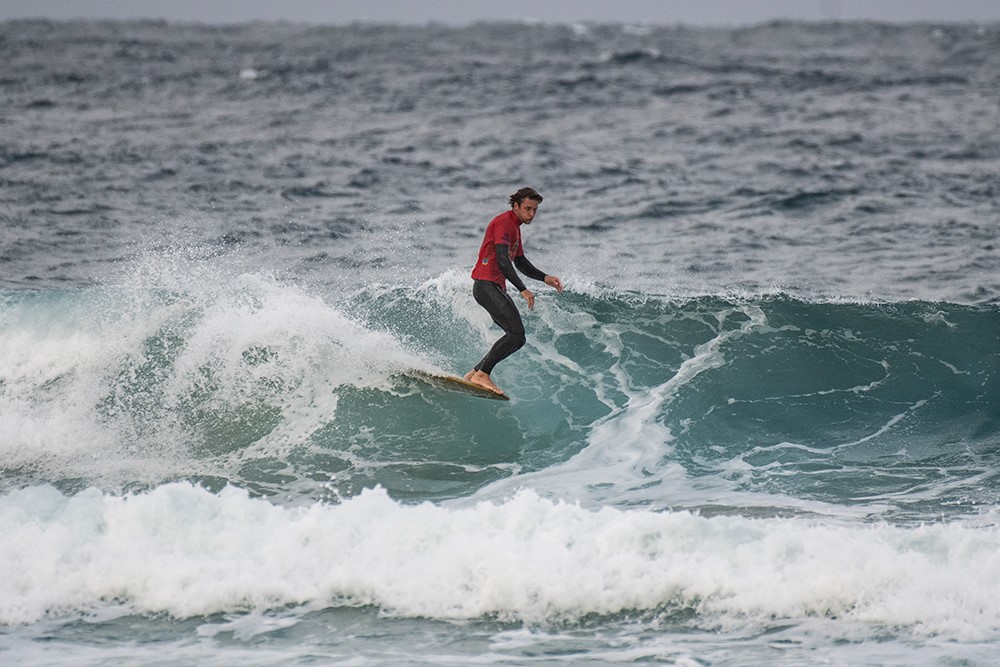 Some of the state’s best stand-up-paddleboarders and longboarders will call Port Stephens home when the NSW SUP and Longboard Titles get underway.
Some of the state’s best stand-up-paddleboarders and longboarders will call Port Stephens home when the NSW SUP and Longboard Titles get underway.
The two-state title events will form the Port Stephens Surf Festival and decide the NSW Teams for the upcoming Australian SUP Titles and the Australian Longboard Titles.
Over 170 competitors are expected to compete in the six-day event, which will see longboards run from 29 April – 1 May and the SUP's follow from 2 May – 4 May.
Port Stephens Council Mayor Ryan Palmer is thrilled to welcome our states best stand-up paddlers and longboarders to the region.
“After a tough 12 months it’s wonderful to see these events returning to Port Stephens — it’s the boost our community and local businesses needed. Our region has shared a healthy relationship with Surfing NSW over the years and I look forward to the six-day event getting underway and wish all the competitors the best of luck when the competition reaches our shores next week.”
2021 will replicate the format from previous years which engages a second chance format across all divisions. However, depending on the number of competitors, some divisions may be reduced to straight knockout.
For the second time, Surfing NSW will be adding a fun-filled tag team event. Each team will be made up of four surfers. The team must be made up of one Junior (male or female) and at least one Over-40 competitor (male or female).
The competition will commence each day at 7:30 am with the call for the day's schedule and location confirmed via the event hotline at 6:45 am. The event hotline is 0458 247 212.
Historically, competitors have come from as far south as Tomakin and as far north as Tweed Heads to enter the event.
The 2021 Port Stephens Surf Festival is proudly supported by Australian Skin Cancer Clinics, Crest Café, Gildan, Port Stephens Council and Surfing NSW. Photo: Ethan Smith / Surfing NSW
Wollongong To Host 2021 Woolworths NSW Junior State Titles And NSW School Surfing Titles
Wednesday, 21 April 2021
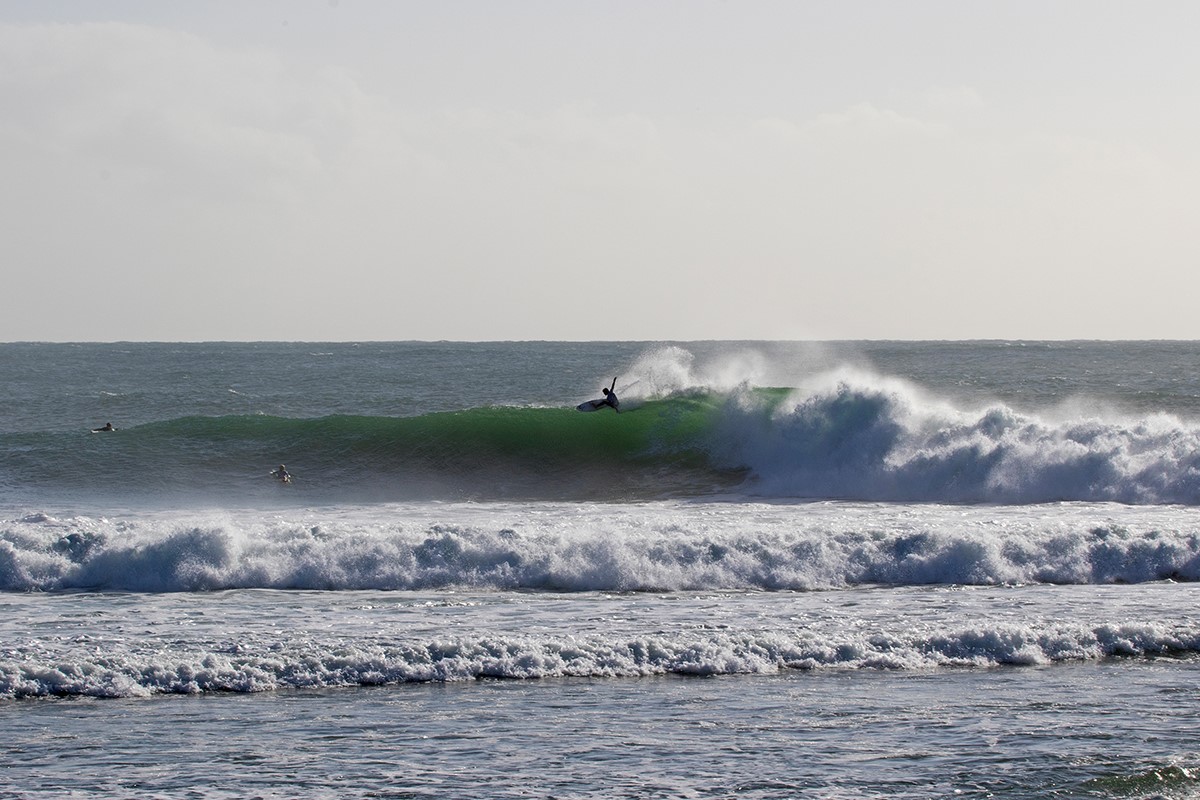 The 2021 Woolworths NSW Junior State Titles pres. by Ocean and Earth will call Wollongong home this July.
The 2021 Woolworths NSW Junior State Titles pres. by Ocean and Earth will call Wollongong home this July.
The event will see close to 300 of NSW’s best junior surfers competing for a coveted state title when the event kicks off from the 14 – 21 July 2021 on the Illawarra beaches.
Unlike previous years, where all qualifiers for the Woolworths NSW Junior State Titles pres. by Ocean and Earth were determined by eight individual regional titles, the 2021 event will invite all junior competitors to enter in their respective age divisions. However, any surfers who have qualified at their respective regionals will hold down positions in the higher seeded round of the event.
Destination Wollongong General Manager Mark Sleigh said the event was a timely boost for an industry that has endured challenging times.
“To have hundreds of visitors descend on our region during winter is obviously a great boost for our accommodation providers and the hospitality industry during what is traditionally a softer period,” he said. “The titles are also an ideal opportunity to showcase our family-friendly product, highlight our amazing beaches and remind people that we really are Sydney’s playground.”
Surfing NSW CEO Luke Madden thanked the Coffs Harbour region for hosting the event for the last three years and looks forward to seeing the event shift south of Sydney in 2021.
“The Woolworths NSW Junior State Titles is one of the blue-ribbon events on the Surfing NSW calendar and we can’t wait to see it land in the Illawarra region for 2021. The event ran fantastically in Coffs Harbour since 2018 and we thank them for all their support, while we also welcome the warm reception from Destination Wollongong. We can’t wait to see what the event has to offer.”
The last two days of the event will comprise of the NSW School Surfing Titles.
2021 will be the eleventh year Surfing NSW will combine the NSW School Surfing Titles into the event.
Competitors will be vying for an NSW Junior Title and in turn, earn their position into the upcoming 2021 Australian Junior Surfing Titles, which will take place in Queensland at the end of the year.
Former competitors in the NSW Junior State Titles pres. by Ocean and Earth include current World Surf League (WSL) Championship Tour (CT) surfers Owen, Mikey and Tyler Wright, Sally Fitzgibbons, Wade Carmichael and Connor O'Leary.
The event will be fully mobile in the Illawarra area with Thirroul, Wonoona, Bellambi, Wollongong, Bulli and Stanwell Park and Sandon Point all venue options.
The daily schedule and location will be confirmed via the event hotline at 6:45am each day. The event hotline is 0458 247 212.
The Woolworths NSW Junior Titles pres. by Ocean and Earth will be proudly supported by Woolworths, Wollongong City Council and Surfing NSW. Photo: Ethan Smith / Surfing NSW.
TAFE NSW Graduate Hits The Airwaves In Broken Hill
April 22, 2021
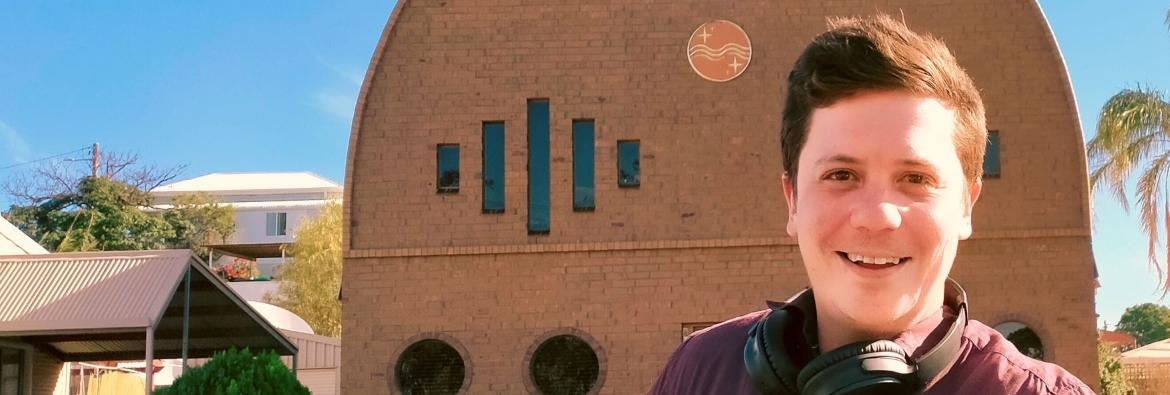
Rufus outside the radio-shaped radio station at Broken Hill
TAFE NSW graduate Rufus Barr has stunned his teachers and peers by landing the coveted gig of breakfast radio host at Hill FM 96.5 Broken Hill just months after completing his studies.
As a former live venue host in Sydney, when COVID-19 hit, Rufus lost all his work. Instead of giving up, Rufus saw this as an opportunity to focus on getting into the career he’d always wanted.
“I’ve always had a passion for radio but initially started working in editing for television, and to satisfy my passion for performing I became a trivia and karaoke host - which is basically like hosting radio, just in a pub and with even worse music,” Mr Barr said.
“After losing all my work during COVID-19 I decided to enrol in the Diploma and then Advanced Diploma of Screen and Media (Radio) at TAFE NSW Ultimo to get qualified and go after my dream job.”
Rufus is getting into the industry at the perfect time. The radio industry experienced a COVID-induced downturn in 2020 but is gradually gaining back momentum as Australians return to the office to maintain its role as one of the most resilient broadcasting modes once again.
TAFE NSW Teacher Nick Bennett said the Advanced Diploma tackles presenting, producing, storytelling, audio and video editing, and industry.
“Students get the opportunity to build their own websites which become a solid portfolio of their work, and Diploma students start to focus on the sort of work they want to make post-studies,” Mr Bennett said.
“Rufus, for example, made a series of quite dark-yet-hilarious radio plays with a fellow student which impressed his teachers and our industry guests.”
Rufus continued into the Advanced Diploma of Screen and Media (Radio), a student-driven and designed course where students work on a collaborative project to manage the TAFE NSW Ultimo radio station and news site and build up a portfolio of creative work.
“Rufus was laser focused on fine tuning his radio producing and presenting, so we wasted no time in getting him on air producing and presenting a regular 2-hour show. That, coupled with regular air checks and a few strategic introductions to industry contacts helped bring the industry gig to fruition,” Mr Bennett said.
Rufus completed the Advanced Diploma in late 2020 and one of his teachers introduced him to the program director at Hill FM, a former teacher at TAFE NSW.
“Hill FM needed a new breakfast host and my teacher suggested me for the job (without my knowledge), sent them some of my work and I got a phone call from the station manager, out of the blue, offering me the job. 12 days later, I was here in broken hill, starting my dream career.”
To find out more about the range of study options available at TAFE NSW including the Advanced Diploma of Screen and Media (Radio), visit www.tafensw.edu.au or call 131 601.
TAFE NSW Graduates Sparkle At Cerrone Jewellers
Former Engineer and Waterloo local May Hua has outshone the competition to gain a coveted role as a designer at the prestigious Cerrone Jewellers.
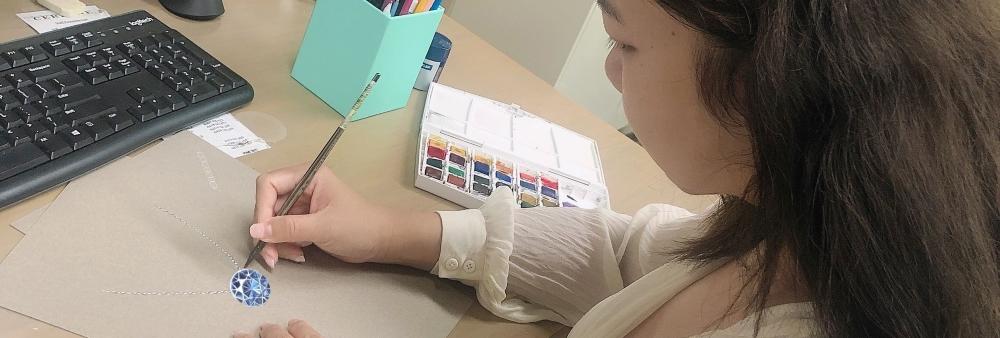
Ms Hua grew up with a love of drawing and design but as sometimes happens she found herself on a different career path.
“After I graduated from my master's degree in Engineering, I took stock of my career trajectory and actually realised I had a real talent and passion for design. I didn’t want to waste any more time on a career I didn’t love so I made up my mind to become qualified and begin my new path,” Ms Hua said.
“I considered a Masters in Jewellery Design, but I wanted to make sure I could get a job after I graduated and found the relationships TAFE NSW established with industry would help me get my foot in the door quicker than studying at university.”
Ms Hua enrolled in the Certificate II followed by the Certificate III in Jewellery Manufacture at TAFE NSW Design Centre Enmore and was impressed by the hands-on nature of the work.
“Because I was able to spend so much practical time honing my craft in the studio, I graduated ready to walk straight into a job,” Ms Hua said.
Ms Hua completed the qualification in December 2020 and through TAFE NSW was offered a position at Cerrone Jewellers. Ms Hua is one of six TAFE NSW graduates employed by Cerrone, which is highly regarded for its bespoke designs and boasts the largest handmade jewellery workshop in Australia.
Managing Director of Cerrone Jewellers, Mr Nic Cerrone, said when they are looking for like-minded employees who have a passion for jewellery, TAFE NSW always delivers workers with the skills and dynamism they are looking for.
“Cerrone has been working with TAFE NSW in offering graduates full time employment for over 30 years,” Mr Cerrone said.
“Cultivating the younger generations to continue to art of the jewellery trade has always been a priority for Cerrone and TAFE NSW graduates come to us with fresh and new ideas and skills as well as an enthusiasm and passion to learn.”
It’s a perfect time to enter the sector, with the Watch and Jewellery Retailing industry projected to grow over the next five years due to anticipated rises in discretionary incomes and consumer sentiment.
TAFE NSW Head Teacher of Jewellery Manufacture and Design Gina Kind said the Certificate III in Jewellery Manufacture provides students with hands-on skills in all aspects of jewellery fabrication in custom artist studios so students graduate ready for a career in the industry.
“Our industry connections mean we are always looking for employment opportunities for our students so many finish the course and go directly into a job,” Ms Kind said.
“Longstanding relationships with businesses like Cerrone mean they often come straight to TAFE NSW seeking fresh talent.”
To find out more about the range of study options available at TAFE NSW including the Certificate III in Jewellery Manufacture, visit www.tafensw.edu.au or call 131 601.
Fined Out: Practical Guide For People Having Problems With Fines
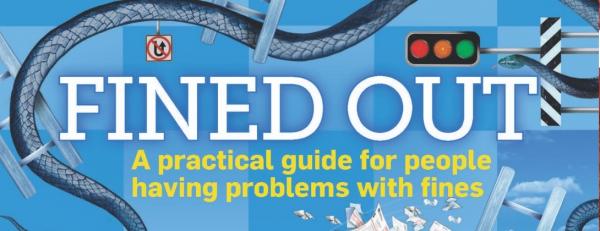 Legal Aid NSW has just published an updated version of its 'Fined Out' booklet, produced in collaboration with Inner City Legal Centre and Redfern Legal Centre.
Legal Aid NSW has just published an updated version of its 'Fined Out' booklet, produced in collaboration with Inner City Legal Centre and Redfern Legal Centre.
Fined Out is a practical guide to the NSW fines system. It provides information about how to deal with fines and contact information for services that can help people with their fines.
A fine is a financial penalty for breaking the law. The Fines Act 1996 (NSW) and Regulations sets out the rules about fines.
The 5th edition of 'Fined Out' includes information on the different types of fines and chapters on the various options to deal with fines at different stages of the fine lifecycle, including court options and pathways to seek a review, a 50% reduction, a write-off, plan, or a Work and Development Order (WDO).
The resource features links to self-help legal tools for people with NSW fines, traffic offence fines and court attendance notices (CANs) and also explains the role of Revenue NSW in administering and enforcing fines.
Other sections of the booklet include information specific to Aboriginal and Torres Strait Islander people, young people and driving offences, as well as a series of template letters to assist people to self-advocate.
Hard copies will soon be available to be ordered online through the Publications tab on the Legal Aid NSW website.
Hard copies will also be made available in all public and prison libraries throughout NSW.
Read the resource online, or download the PDF.
Learner Profile Opening Doors For Students
April 21, 2021
NSW is set to lead the nation in developing a digital learner profile, with students invited to co-design their “education passport”.
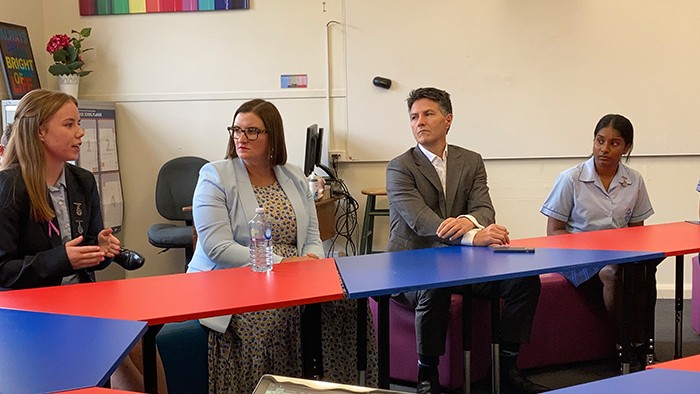
First consultation: Macarthur Girls High students share their ideas about the learner profile with Education Minister Sarah Mitchell and Customer Services Minister Victor Dominello.
Students in NSW will have a world-class edge when applying for a job thanks to the development of a learner profile.
Minister for Education Sarah Mitchell and Minister for Digital and Minister for Customer Service Victor Dominello visited Macarthur Girls High School yesterday to announce students would play a pivotal role in developing the nation-leading service.
The profile will allow students to store and share the verified story of their academic and personal achievements in one digital place.
Ms Mitchell said the digital learner profile would create continuity and ease for students to record their valuable learning experiences while at school.
“We know our students are more than the sum of their exam results and they want a reliable way to display all their experiences and achievements,” Ms Mitchell said.
“I am inviting students and schools to be part of the design process, so that we can help them open doors to further study and employment.
Mr Dominello said the learner profile formed part of a big vision for the establishment of a NSW education passport.
“An education passport would provide a digital record of a student’s achievements and accomplishments throughout their school journey, which can be shared with future employers, licensing authorities and tertiary institutions,” Mr Dominello said.
“Students graduating from NSW high schools in 2021 and beyond face a rapidly changing labour market, with a growing emphasis on digital skills and micro-credentials.
“Establishing a universal, digital record of educational attainment would assist students, career advisers and employers through a more efficient matching of skills to employment opportunities.
“It would be a boon for our state in terms of productivity, representing an important micro economic reform.”
A new app for parents and carers of NSW public school students was also released yesterday to allow them to easily stay up to date with news and events at their children’s schools.
Ms Mitchell said the app would eventually completely replace paper forms travelling to and from school via the bottom of the school bag.
Through the app, parents and carers will be able to receive push notifications from schools to their phones to ensure that they don’t miss any important news.
The app will also allow parents and carers with children at more than one NSW public school to get news and information from multiple schools in the same place.
Download the app by searching for NSW Education Parent App on the Google Play or Apple app store.
Teaching Australian Students That Respect Matters
Ministers: The Hon Alan Tudge MP, Senator the Hon Anne Ruston
New online resources are now available to help school students learn about safe, healthy and respectful relationships, including issues around consent and peer pressure.
More than 350 videos, digital stories, podcasts and other materials are available free to teachers, students and families through The Good Society website, as part of the Respect Matters program.
The Respect Matters program has been developed in conjunction with Our Watch, the eSafety Commissioner and the Foundation for Young Australians, as well as parent, community and principals’ groups.
Resources have been developed for students from Foundation to Year 12 and content is aligned with the current Australian Curriculum, which was agreed by all states and territories in 2015. The Australian Curriculum is currently under review and a public consultation period will open on 29 April.
Foundation to year 6 focuses on building healthy relationships and friendships, including content on empathy, peer pressure, interacting respectfully, and challenging discriminatory behaviour. It also provides the building blocks for later content.
Years 7 to 9 focuses on moving from pre-teen to adolescence and looks at relationships and power, and abuse. There is content in this age section that specifically deals with abuse and violence against women.
Years 10 to 12 builds on earlier topics and also includes materials on intimate relationships, sexting, sexual consent and decision making.
Teachers and parents will be able to select from the full range of learning content and make decisions about what materials they use in their classrooms to ensure it reflects the values of their school and their community.
The Respect Matters program also provides support and professional learning modules for teachers and pre-service teachers.
Minister for Education and Youth Alan Tudge said education was important in building and maintaining respectful relationships from a young age.
“The most important people in teaching kids about respect and relationships are parents, but schools can also play a vital role,” Minister Tudge said.
“These materials will provide additional support to better educate young Australians on these issues and have been designed to complement programs already being offered by states and territories.
“I will be discussing these matters further with my state and territory counterparts when we meet later this month.”
Minister for Women’s Safety Anne Ruston said early intervention and education were key to achieving our goal of a future without domestic violence.
“We need to work on preventing violence before it begins and that is where Respect Matters, along with other initiatives like our Stop it at the Start campaign, are working to ensure the next generation of Australians grow up in a country where women and children can live free of violence,” Minister Ruston said.
“School years are crucial in a child’s development and we want to guarantee that whether it be at home, at school or even playing weekend sport, that kids and their parents have been informed about what is respectful behaviour and what is not.”
The Australian Government has invested $7.8 million in the Respect Matters program to support and promote positive attitudes, behaviours and equality in schools to help prevent domestic, family, and sexual violence.
The commitment is part of a significant and broad-reaching package of initiatives under the Fourth Action Plan of the National Plan to Reduce Violence against Women and their Children 2010-2022.
Additional resources from the Respect Matters program including professional learning modules for educators are available at https://studentwellbeinghub.edu.au/.
From Ship To Shore
April 22, 2021
After fourteen years at sea, former Navy officer and merchant seafarer Edward Caslake decided it was time to transition from ship to shore.
Edward Caslake joined AMSA as a Search and Rescue Officer in 2018.
Edward currently works in the AMSA Response Centre, a 24/7-hour operations room, which coordinates Search and Rescue missions across Australia.
Edward said it was a transition he made so he and wife could settle down and start a family.
“I started with AMSA in the Response Centre back in August 2018 and it has been a really good transition from ship to shore for me,” Edward said.
“My wife and I wanted to start a family but I was away for weeks, almost months at a time, which would have been too much once we’d had our daughter and were building that home life.”
As a Search and Rescue Officer, Edward assists in organising search and rescue efforts across Australia’s large designated area of responsibility, which equals about a tenth of the earths surface.
“As a Search and Rescue Officer, we respond to all manner of alerts across the country. I guess if it floats, flies and fails to do so; we help look after them.
“My interest in this role came from a love of the sea, I have spent the past 14 years of my professional career out on the ocean in the Merchant Navy as well as the Royal Australian Navy.
“I joined the Royal Australian Navy in 2004, I was in for six years as a Maritime Warfare Officer and spent most of my time up in Cairns as a boarding officer on the patrol boats and also in the hydrographic survey space.
“In 2010, I went to the Australian maritime college down at Launceston to become a merchant seafarer. I spent eight years doing that as a second mate driving 80 metre Anchor Handling tugs off the north coast of Australia and the Bass Strait; supplying oil rigs and towing them around when they needed to move.
“My previous experience helps me in my current job as I know what seafarers are going through, what it’s like to be out on the boat in 60 or 70 knots of wind and sailing through a cyclone.
“When you’re asking a ship to do something in those conditions, it’s very handy to know what it’s like first hand.”
Edward said an example of an incident he has been involved in since joining AMSA was a request for medical assistance from a yacht 900km east of Fraser Island.
“Back in April 2019, we had a request from a sailing vessel, the master had a passenger onboard with a medical complaint.
“After consultation with the doctor, who was actually a doctor also, they decided it was potentially appendicitis and he was in need of medication.
“So our response to that request was to get some medication to our Challenger Jet in Cairns and we simply flew it all the way out to the yacht and parachuted it in a container into the path of the vessel. The vessel was then able to sail on to Noumea for the patient to receive medical assistance.
“What I found interesting about that job was that no matter where you are, we’re there to help. Even if it’s a simple thing as getting some medication.
“It’s obviously a long way to go but we’ve got that reach, so I just thought that was pretty cool.”
Further information is available on AMSA’s search and rescue capabilities.
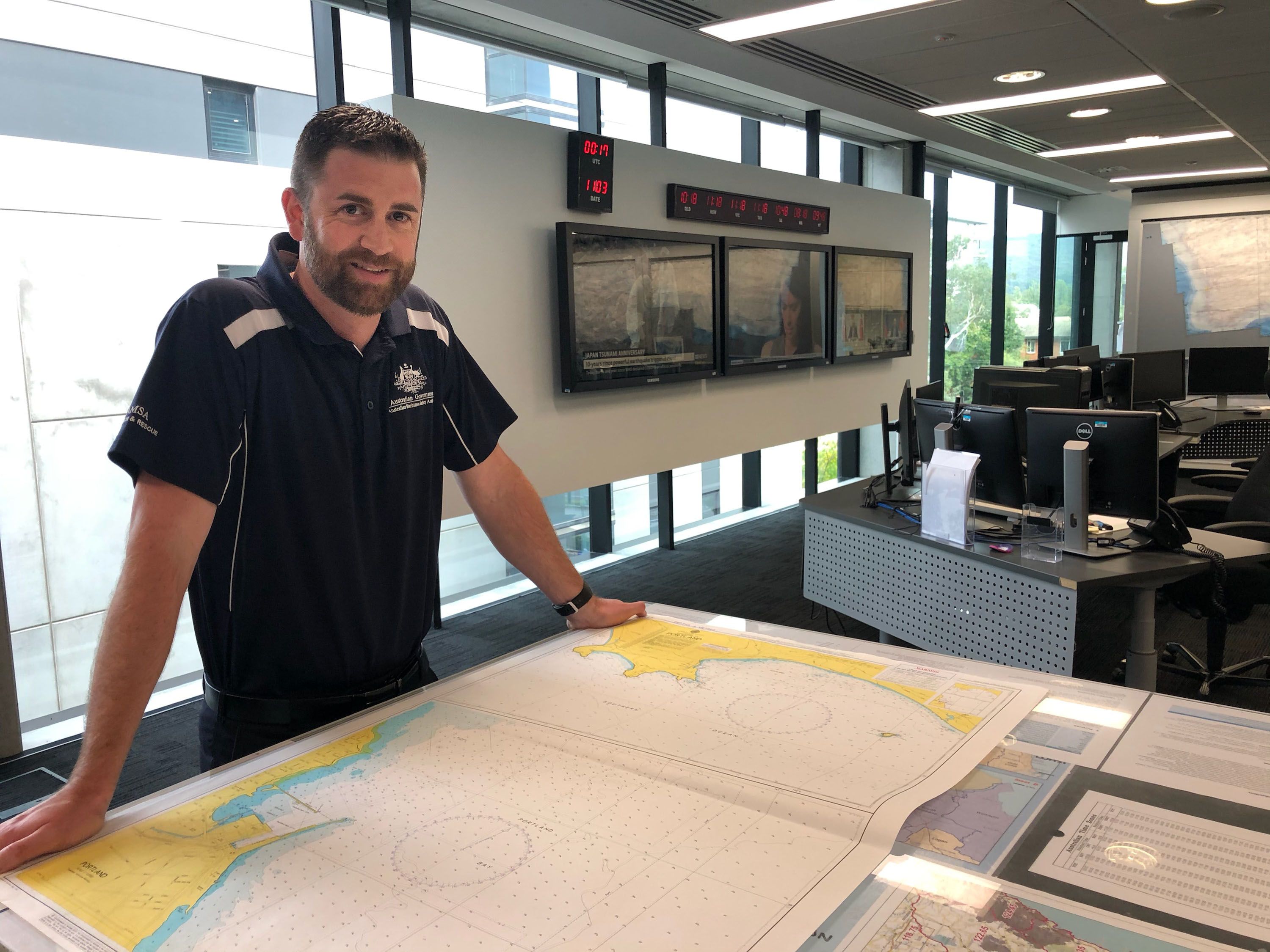
Edward Caslake. Photo supplied
New Research Finds Slumped Posture Not Such A Pain In The Neck After All
Dorothea Mackellar Poetry Competition 2021 Entries Now Open
2021 OPTIONAL THEME: "RICH AND RARE"
''Our poets are encouraged to take inspiration from wherever they may find it, however if they are looking for some direction, competition participants are invited to use this year's optional theme to inspire their entries."
In 2021, the Dorothea Mackellar Memorial Society has chosen the theme “Rich and Rare.” As always, it is an optional theme, so please write about whatever topic sparks your poetic genius.
For a copy of the wonderful theme poster, please click here.
HOW TO ENTER
*PLEASE NOTE: If you're registering as an individual student, put your HOME address in your personal details and not your SCHOOL'S address! The address you list is where your participation certificate will be posted!*
ONLINE SUBMISSION
(primary school and secondary school, anytime during the competition period)
Teacher/parent - registration completed online (invoice will be emailed within 2 weeks of registration)
Log in to your page.
Enter student details and submit poem(s) (cut and paste or type in poem content direct to the webpage) PLEASE DO NOT UPLOAD POEMS AS ATTACHMENTS AS THAT FUNCTION IS FOR POSTAL ENTRIES ONLY.
Repeat step 3 for every student/individual poem.
PLEASE SEE HERE FOR A DETAILED PDF ON ENTRY INSTRUCTIONS FOR TEACHERS AND PARENTS.
USEFUL TIPS
Have a read of the judges' reports from the previous year. They contain some very helpful advice for teachers and parents alike!
It is recommended for schools to appoint a coordinator for the competition.
Only a teacher/parent can complete the registration form on behalf of the student/child.
Log-in details: username is the email address and a password of your choice.
Log-in details can be given to other teachers/students for poem submission in class/at home.
Log-in as many times as necessary during the competition period.
Teachers can view progress by monitoring the number and content of entries.
Individual entries are accepted if the school is not participating or a child is home schooled. Parent needs to complete the registration form with their contact details. Please indicate 'individual entry' under school name and home postal address under school address.
Invoice for the entry fee will be sent to the registered email address within 2 weeks.
‘Participation certificate only’ option available for schools where pre-selection of entries has been carried out. Poems under this option will not be sent to judges, students will still receive participation certificate for their efforts.
Please read the Conditions of Entry before entering. Entries accepted: March 1 to June 30, results announced during early September.
Visit: https://www.dorothea.com.au/How-to-Enter-awards
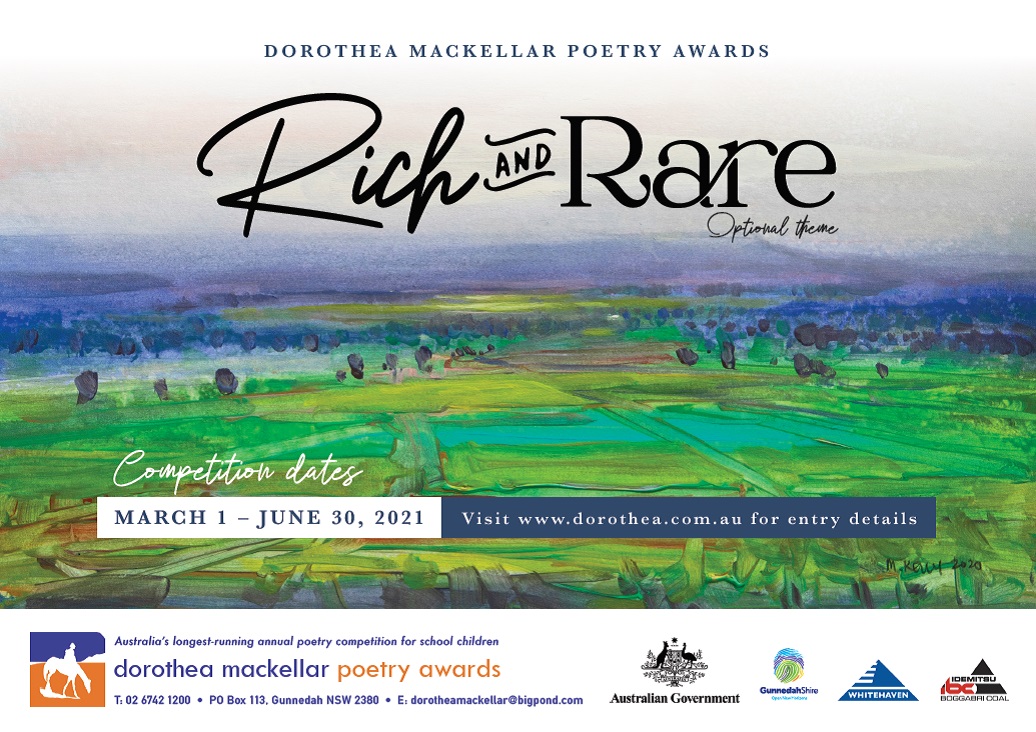
The comfort of reading in WWI: the bibliotherapy of trench and hospital magazines
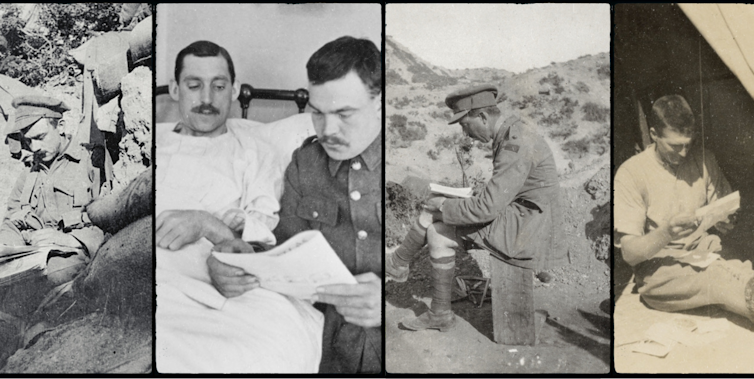
Modern warfare produces both trauma and boredom in equal measure. During the first world war, one way troops found solace was by writing and reading magazines created by soldiers, for soldiers.
Throughout the war, these magazines were produced in trenches, on troopships, in camps and in hospitals. Some were written by hand; others produced on makeshift printing presses soldiers came upon in war-torn towns of France and Belgium.
They could be simple pencilled sheets reproduced with carbon paper or made using jelly or spirit duplicators. Others were more sophisticated multi-page publications, often featuring illustrations.
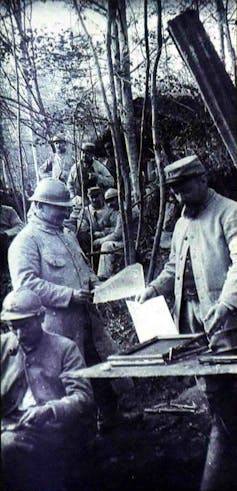
The Australian War Memorial holds 170 troopship journals and over 70 trench magazines. Many other trench publications have disappeared; some can’t be read anymore because their ink has faded.
Our research focuses on how these magazines cared for soldiers, considering their significant psychological and emotional benefits.
Bran Mash And Aussie
One of the first Australian magazines was the Bran Mash, created by the 4th Australian Light Horse Regiment on Gallipoli.
Written in pencil on two leaves of official typing paper, and duplicated with carbon paper, there was only a single issue. It included a selection of the rumours, or “furphies”, circulating on Gallipoli.
Many trench journals published a single or limited number of issues. They were often forced to stop production because of troop movements, the loss of an editor or printing press, or lack of paper.
Phillip L. Harris, editor of trench magazine Aussie: the Australian Soldiers’ Magazine, once wrote he had made “a fortunate discovery in the cellar of a printery at Armentiéres”.
There, he found ten tons of paper, with which he printed 100,000 copies of the third issue of Aussie. With Harris at the helm, 13 issues of Aussie were produced in the Western Front trenches through 1918 and 1919.

These magazines all reflected the humour, sentiment and preoccupations of soldiers and soldier-patients. The handwritten The Dinkum Oil, produced at Gallipoli over eight editions in 1915 was a place to express national identity — not least through the use of Australian slang.
These magazines offered therapeutic value through their reading, and writing. Stories, verse and jokes were all welcome, alongside items airing complaints: a much-needed release valve for the disgruntlements of military life.
Humour runs through them. A cartoon in Aussie, captioned “Polling Day in France”, showed two officers talking. “In what State did you enlist?” asks the senior officer. Private Jones replies: “In a state of drunkenness, sir”.
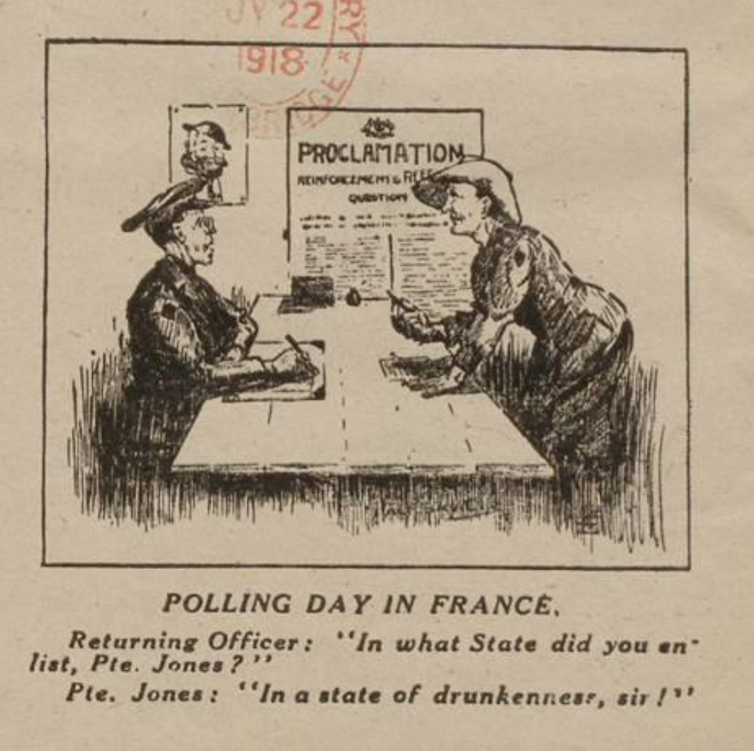
Other anecdotes captured misunderstandings between the Australian soldiers and French civilians, with “bon soir” misheard as “bonza war!”
Read more: Peter Weir's Gallipoli 40 years on: deftly directed and still devastating
Bright And Light
The editors called for “bright, short contributions”, as The Rising Sun, an Australian magazine produced from December 1916 to March 1917, put it.
French trench magazine Le Poilu (“The Hairy One”, a slang term for an infantryman) stated its ambition as being “simply to entertain you for a moment, between two heavy mortar shells, or even between two fatigue-duties.”
The Harefield Park Boomerang, published at the No. 1 Australian Auxiliary Hospital at Harefield House in Middlesex, England, committed to having a “cheery tone”, despite the sometimes grim content of their publication.
Read more: Friday essay: do ‘the French’ care about Anzac?
Alongside news of activities in the hospital and updates on sports news, it included mentions of men who died (“our fallen comrades”) and their funeral details, as well as updates on donations to the “headstone fund appeal”.
Alongside the grim realities, black humour is very apparent. A poem in Mountain Mist, a magazine produced by soldier-patients at the Bodington sanitorium in the Blue Mountains for returned soldiers suffering tuberculosis, played on the popular soldier song Parlez Vous with words changed to reflect the experience of the tubercular soldier:
Digger had a little cough
It wasn’t much you know
Yet everywhere that Digger went
His cough it had to go.
Sentiment also figured strongly. Poems praising mothers and sisters were common, and there were many invocations of home.
In 1917, J.J. Collins wrote a poem “To my mother”, published in the Harefield Park Boomerang, comforting her he was not defeated by his wounds:
I’ll bring home marks of a German shell.
But what does it matter, mother dear?
Dry from your eye that glistening tear.
Let your heart rejoice at the pain I’ve borne.
These magazines were also sent home, giving loved ones a glimpse of war life.
Hospital magazines could provide some reassurance to loved ones, but the picture they painted was incomplete. Soldier-patients were typically presented as stoic, cheerful and able to cope with whatever was thrown at them – as the poem by Collins shows.
But the reality for many returned soldiers who had been wounded would be a legacy of ill-health and early death.
For soldiers wounded in ways that would forever change them, this was perhaps how they preferred to be seen — still men, still warriors. These magazines reworked the traumas of war to try and make the experience palatable for the men, and for their loved ones.
Read more: Telling the forgotten stories of Indigenous servicemen in the first world war
Ongoing Bibliotherapy
These early trench and hospital magazines played an essential psychological function. In providing entertainment and in keeping soldiers’ minds occupied, they were a much-needed form of therapy and mental comfort in difficult times.

The place these magazines held in soldiers’ hearts was perhaps illustrated in the reprinting of all the wartime editions of Aussie magazine in 1920.
Phillip Harris subsequently revived the paper, now to be a general newspaper that would transfer the “splendid spirit of comradeship, enthusiasm and patriotism” of the Australian soldiers to the Australian population at large. It lasted until 1931.![]()
Véronique Duché, A.R. Chisholm Professor of French, The University of Melbourne and Amanda Laugesen, Director, Australian National Dictionary Centre, Australian National University
This article is republished from The Conversation under a Creative Commons license. Read the original article.
The years condemn: Australia is forgetting the sacred trees planted to remember our war dead
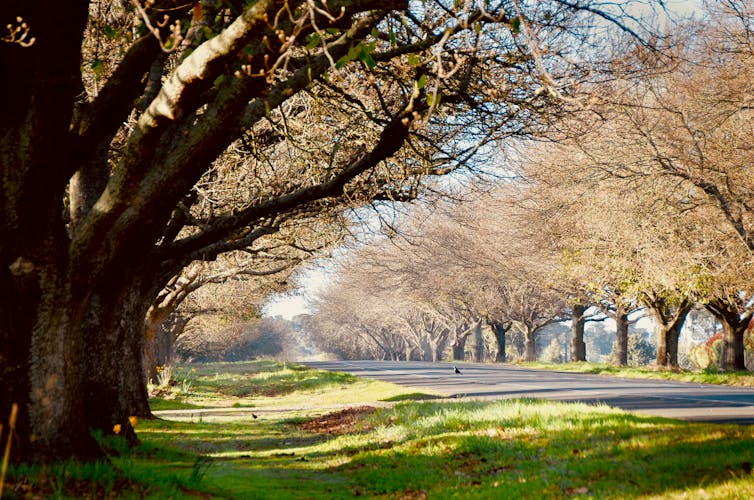
On Anzac Day each year, Australians remember those who served and died in wars and conflicts. We may attend a dawn service, go to a march or lay a wreath at a war memorial. But across Australia lie living war commemorations you may pass every day, without realising their significance.
Dating back more than a century, Avenues of Honour exist to remind us of the sacrifice and suffering of our servicemen and women. They might comprise sentinel trees lining one or both sides of a street, or a path through a park. These trees might also form a grove, or consist of a magnificent lone specimen.
The earliest recorded Avenues of Honour were created in response to colonial Australia’s participation in the Boer War, but most were established during and after World War I. In some cases, each tree was planted in memory of a specific fallen soldier - a tangible way for grieving loved ones to remember their dead.
Sadly over time, some memorial trees have died or been uprooted. Others have survived but are neglected. The race is on to ensure the remaining trees are documented, preserved and restored.

They Shall Not Grow Old
Avenues of Honour became common in Australia during and after World War I. At one point, 325 existed in Victoria alone.
More than 60,000 Australians were killed in World War I and the Australian government did not repatriate their bodies. So a tree in an Avenue of Honour, close to the family home, became an important physical memorial. It also respected the wishes of returned servicemen who wanted a fitting tribute to all those who died and served in the war.
The plantings were often organised by women or close family members of a dead soldier.
Some avenues consisted of native species such as eucalypts and kurrajongs – in fact, some represent the first major use of native vegetation in civic landscapes. Some avenues were planted with conifers such as pines and cypresses, walnut trees, mangoes and even palms. Many consisted of exotic deciduous species such as elms and oaks.
For example, in 1918 an Avenue of Honour was planted at Woodend, in Victoria’s Macedon Ranges. According to the National Trust it initially consisted of 162 English and Algerian oak trees planted each side of the Calder Highway.
The trees were dedicated to individuals, 38 of whom were killed in war. Attached to each tree was a plaque bearing the names of those remembered. But many of these plaques were lost or damaged over time.
Read more: Crowds at dawn services have plummeted in recent years. It's time to reinvent Anzac Day
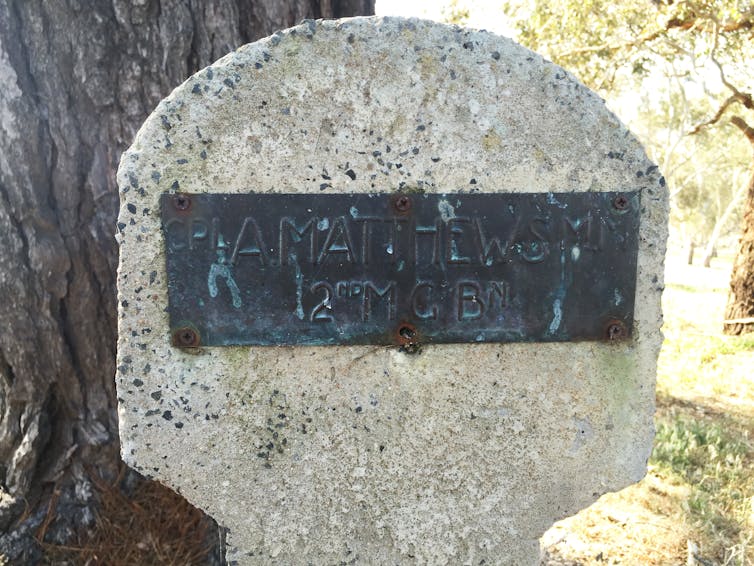
Age Has Wearied Them
As the years wore on, many Avenues of Honour aged and declined or disappeared completely. Some lost so many trees they were no longer avenues.
An Avenue of Honour planted in 1917 at the Melbourne beachside suburb of Sandringham once consisted of 171 red flowering gums. Each represented a lost soldier or nurse. But by 2013, just 32 trees remained.
In 2000, fewer than 200 Avenues of Honour were recorded across Australia – most in Victoria. However, data were scarce and many more unrecorded and forgotten avenues were thought to exist. Work began around this time to uncover them.
In 2004, non-profit organisation TREENET launched its Avenues of Honours program. It aimed to honour, with a tree, the memory of every Australian who had died in war. Original avenues would be documented, preserved and reinstated. Where necessary, new avenues would be established.
By late 2006, 567 avenues had been identified – three times more than originally known. They were estimated to contain more than 100,000 trees, however many were depleted or in poor condition. It was also clear other avenues remained elusive.
By now, the centenary of World War I was approaching, and work to revive Avenues of Honour picked up.
The Soldiers Memorial Avenue in Hobart was restored. In Willunga, South Australia, a consortium of industry and community groups established a new avenue consisting of 100 Algerian oaks.
But the future of other avenues is not assured. Ballarat, for example, is home to Australia’s longest Avenue of Honour. It runs for 22km and comprises 3,771 trees, each bearing a plaque dedicated to men and women who served in World War I. But the avenue is under constant threat from roadworks.
Read more: Telling the forgotten stories of Indigenous servicemen in the first world war
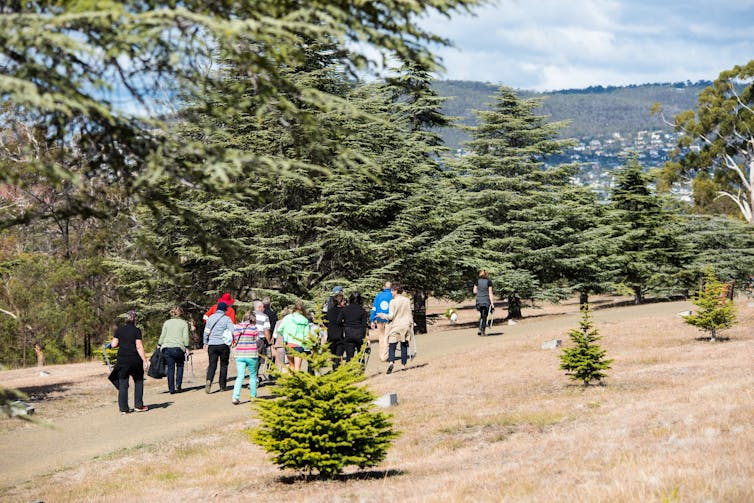
We Will Remember Them
Over the years, efforts to identify and restore Avenues of Honour have struggled to attract government funding. But this has not deterred many dedicated local custodians, community groups, RSL members, historians and others from continuing the work.
Some avenues have been restored or are now better managed. And the Avenues of Honour project is now in its 17th year, made possible by private donations.
As of 2020, the project had identified 605 Avenues of Honour, spread across most states and territories as follows:
- ACT: 3
- NSW: 77
- QLD: 57
- SA: 54
- TAS: 70
- VIC: 317
- WA: 27
Despite all the good work, there has been no large-scale replacement of lost trees and avenues. Nor is there a national strategy to manage and replace these iconic elements of the Australian urban and rural landscape.
For many avenues, nature will take its course as the trees age. Soon, there will inevitably be fewer trees left. But this Anzac Day provides a chance to consider how to preserve the trees that remain, and restore those lost.
Do you know of an Avenue of Honour in your area? If so, please take a photo and send it, along with a description, to editorial@theconversation.edu.au. Or click here to find your local Avenue of Honour, identify a new one, provide information about an existing avenue or donate to the preservation effort.![]()
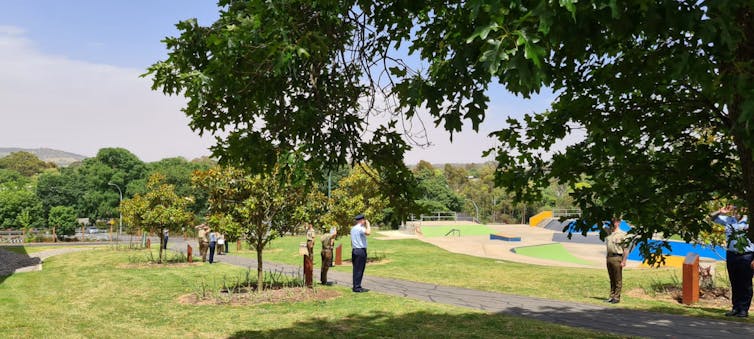
Gregory Moore, Doctor of Botany, The University of Melbourne
This article is republished from The Conversation under a Creative Commons license. Read the original article.
'I want to scream and scream': Australian nurses on the Western Front were also victims of war
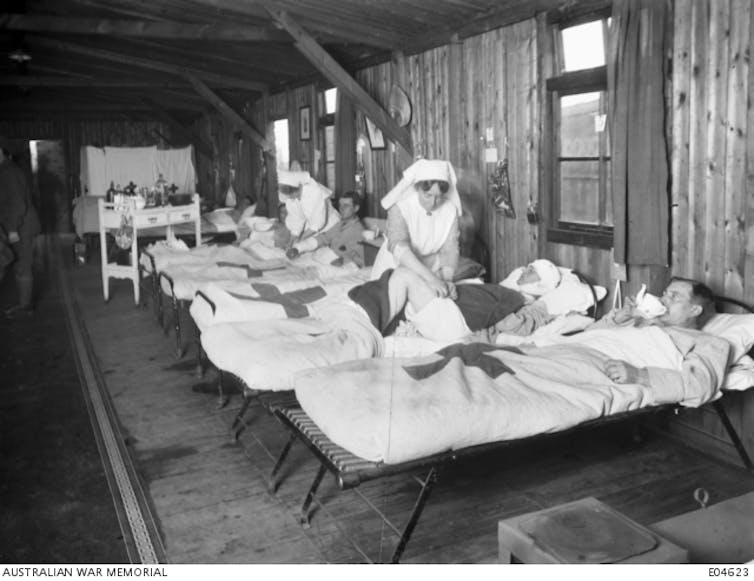
The revival of interest in Anzac since the 1980s has depended in part on the repositioning of soldiers as victims. We rarely celebrate their martial virtues, and instead note their resilience, fortitude and suffering.
This shift in emphasis opens up more promising space for the inclusion of women. Nurses were not warriors - they were caregivers. But they too suffered trauma as a result of their service.
In what must be regarded as something of a miracle, no Australian nurses were killed. But like the men they devoted themselves to, they were worn down and in some cases shattered by the horrors they witnessed.
From 1916, Australian nurses served in Casualty Clearing Stations (CCS), almost on the front line, often under fire and always under immense pressure. This was the most dangerous and intense working environment in which they could serve. It was far removed from the hospital ship environment at Gallipoli, or the hospitals further from the lines, where there was at least the prospect of regular respite.
The CCS was a 1915 innovation designed to provide treatment to men as soon as possible after they were injured. They operated close to the front lines, and so took nurses into the danger zone. CCS nurses were assailed by the realities of trench warfare and the demands of treating damaged men. Soldiers came to the CCS within hours of wounding, bloody and dying, needing urgent surgery for their shattered limbs and mangled bodies, or blistered and blinded from gas attacks.
The sight of the battle front was terrifying and compelling — Sister Elsie Tranter, for one, was captivated. She wrote in her diary that on her first night at a CCS near Grevillers, in March 1918 she:
[…] had the flaps on the tent fastened back and spent most of the night watching the flashes in the sky from the guns […] everything seemed so surreal.
For Sister May Tilton, it was the industrial sounds of battle that impressed. She wrote that the Third Battle of Ypres (also known as the Battle of Passchendaele) started with:
[…] a continuous rumble and roar, as of an immense factory of vibrating machinery filled the night. The pulsing sounds and vibration worked into our bodies and brains; the screech of the big shells, and the awful crash when they burst at no great distance, kept our nerves on edge.
Shrapnel falling to the ground, the thrilling sight of aerial dog fights, damp and dirty dugouts, sandbagged tents, constant artillery fire, the smell of gas, the tremble of the earth — this was the landscape of the CCS.

Sister Connie Keys did not expect they would come through safely, and later confided to her mother that now “I’m only afraid of being afraid”. She had experienced terror beyond measure.
CCSs struggled to cope at the height of battle, and staff worked extremely long hours to deal with the flood of casualties. One of them, 2nd Australian CCS, had a nursing staff of 20 and put through 2,800 patients in the first 18 hours of the “Messines push”.
May Tilton recalled in her memoir that she often “went on duty at 8pm, worked continuously during a ‘stunt’[a minor military operation], until the following midday, with ten minutes for supper at midnight, and half an hour for breakfast at 8am”.
The experience of nurses attests to the aphorism of war as long periods of boredom interspersed with brief periods of terror.
Static attrition warfare, conducted through artillery bombardment, gassing and close fighting, produced fighting conditions and wounds that appalled both the victims and those who cared for them.
The resuscitation wards were the greatest test for nurses. Tilton recalled that:
[…] only the worst cases could we possibly hope to attend to. The work in the resuscitation ward was indescribable. The butchery of these precious lives […] To watch them dying was ghastly.
The night sister confessed
I cannot speak of it […] I want to scream and scream.
Nurses were brought to despair – not because they were unable to save lives, for nurses were accustomed to death, but because they were unable to care for patients as they would have done “at home”. They had been trained to fashion order out of chaos, to bring a patient through the days and nights of a health crisis with patience, gentleness and watchful vigilance, and in some cases to ease their path to a painless and tranquil death.
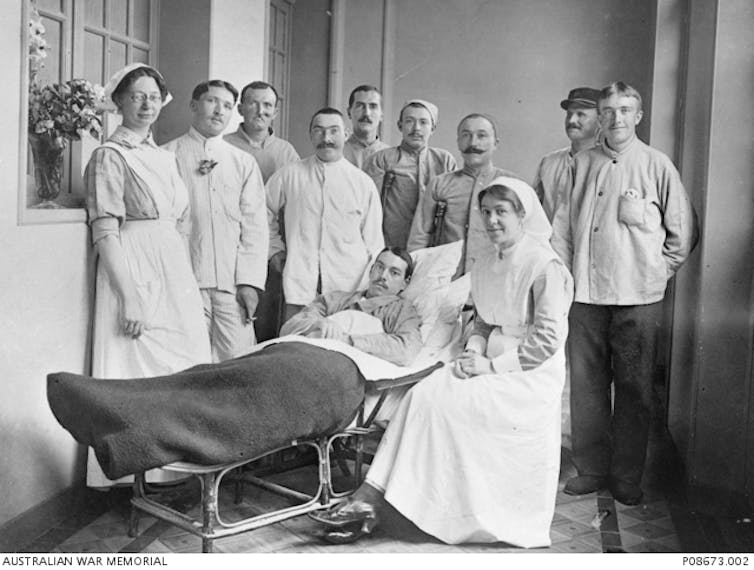
But in war, they wrestled with the irresolvable conflict between duty and fear, and between their compassion and the realities of conflict. Death on the Western Front was ugly, chaotic and painful, so much so that some “ministering angels” came to doubt their Christian faith. “I can’t believe there is a God,” wrote Sister Alice Ross King after the Ypres Offensive, “it is too awful for words”.
Nurses, like soldiers, knew when they were at breaking point, and feared being unable to fulfil their duties. Tilton confessed:
[…] the privacy of our tents was a welcome relief for the weakness we dared not show before our brave, suffering boys.
Even the Armistice, when it eventually came on November 11 1918, brought little comfort. Anne Donnell became terribly depressed and, like many, found joy impossible when she contemplated the sadness of empty homes and hearts.
Nurses carried the burden of putting back together the victims of conflict, yet struggled to maintain their own physical and mental health. For many, their return to Australia was marred by ill-health, and what we would now call post-traumatic stress disorder.
But they also displayed courage and resilience. The experiences of Australian Army nurses on the Western Front can be a starting point, reaching through all Australia’s wars, for discussion of the response to extreme physical and psychological stress borne by those who treat the casualties of war. They too were war’s victims.![]()
Fiona McLeod, PhD Candidate, The University of Queensland and Martin Crotty, Associate Professor in Australian History, The University of Queensland
This article is republished from The Conversation under a Creative Commons license. Read the original article.
Bridges, highways, scaffolds: how the amazing engineering of army ants can make us smarter creators

Army ants (Eciton burchellii) are known for their vast foraging raids. Hundreds of thousands of ants flow like a river from their nest site, scouring the jungle as they prey on anything unable to escape the swarm.
These raids are enormous undertakings. A single raid can be 20 metres wide and 100 metres long, comprising more than 200,000 ants, running at 13 centimetres per second, and gathering up to 3,000 prey objects per hour.
To ensure traffic flows efficiently, army ants construct highways and bridges along the rough forest floor. These structures are built entirely out of worker ants that join their bodies together.
How these tiny, blind ants manage to coordinate these dynamic constructions remains largely unknown, but a new study brings us closer to the answer.
Research published today in the Proceedings of the National Academy of Sciences describes, for the first time, a type of self-assembled ant structure called a “scaffold”.
It also introduces a mathematical model for how scaffolds are formed, which could have implications for several fields of engineering.
Scaffolds For Army Ant Safety
The research shows scaffolds act like a safety net for foraging army ants. They prevent walking ants from slipping and falling when their trail runs along steep ground.
The authors stalked the forests of Panama to find ant swarms, then redirected their trails along a platform that could tip between 20 and 90 degrees from a horizontal position.
The ants rarely formed scaffolds on slopes less than 40 degrees steep, while steeper inclines led to larger and faster-growing structures. Scaffolds were also more likely to be built when many workers were transporting heavy prey items.
And once a scaffold was in place, the number of falling ants would drop nearly to zero — even across a vertical surface.
Amazing Self-Assembling Architects
Ants are masters of collective architecture. Several species are documented to self-assemble into functional structures to overcome challenges in their habitats.
For instance, weaver ants (of the genus Oecophylla) line up in teams to form “pulling chains”, acting as living winches to bend leaves together when building their treetop nests.
Entire colonies of fire ants (Solenopsis invicta) escape flooding by forming floating rafts that can sail for several days, until the water retreats and the colony can safely land ashore.
Army ants (of the genus Eciton), however, have mastered this ability and extended it to almost every aspect of their biology. Along a single foraging raid, army ants can form hundreds of pothole plugs.
Their bridges, which span several ant body-lengths, help ease their passage over the irregular ground of Central and South America’s rainforests. At the end of each day the entire colony self-assembles into a huge hanging nest called a “bivouac”.
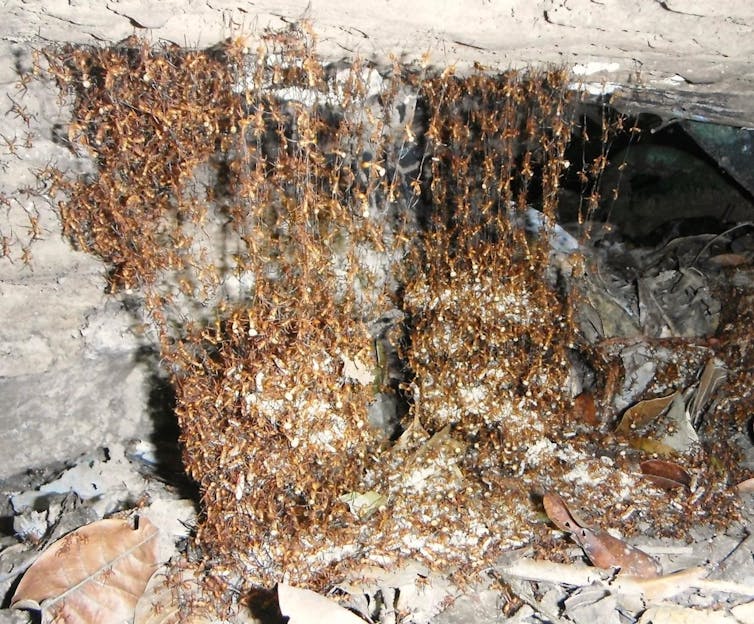
The study published today adds “scaffolds” to the existing list of structures built by army ants to sustain their fast-paced lifestyle.
Self-assembling into structures which are orders of magnitude larger than an individual requires an extreme degree of coordination.
Strikingly, this is achieved without any leaders or external blueprints. Each individual can only respond to local interactions with its neighbours and changes in the environment.
Discovering how these one-on-one interactions among individuals lead to complex group formations presents a challenge for biologists, and a golden opportunity for engineers.
Read more: Six amazing facts you need to know about ants
Working On Yourself For The Good Of The Team
Scientists have a name for when relatively simple animals display sophisticated behaviour at a group level: “emergence”.
Take the mesmerising undulations flowing through groups of starlings as they evade predators in the air, or the lightning-fast escape waves seen in schools of fish. Such coordination was once thought to be the result of telepathic communication between group members.
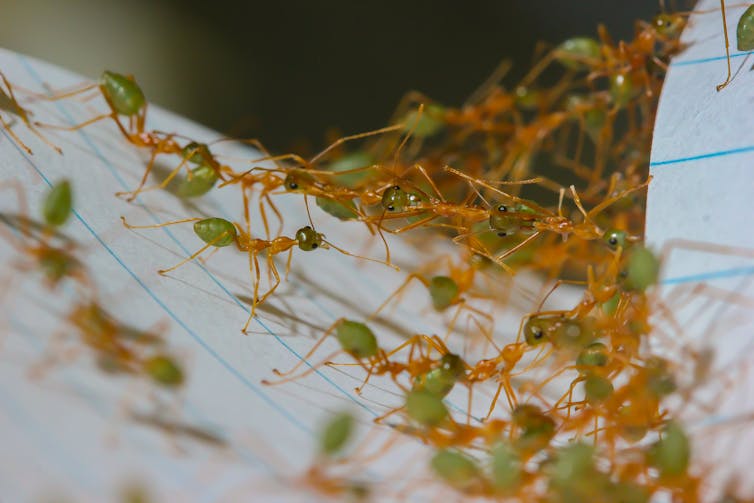
Scientists now know simple one-on-one interactions can add up to more than the sum of their parts, explaining much about group-level patterns. But they’ve yet to fully understand how information at an individual level is combined and filtered to translate to a group-level response.
The recent research on army ant scaffolds provides new insight on this front, by developing a theoretical model of scaffold construction that centres around a simple mechanism.
That is: ants can sense how much they are slipping, and are more likely to stop and join scaffolds when their rate of slipping is high.
The ants don’t have to communicate with each other or assess the size of the structure. The properties of the group are modified simply by individuals sensing and correcting their own errors.
Future Applications
The ability to form complex, adaptive structures using a minimum amount of sensing and information processing is extremely valuable to many engineering fields.
It could assist with the rapid production of biological products (biofabrication), designing self-healing materials such as metals or plastics that repair themselves when damaged, and in swarm robotics.
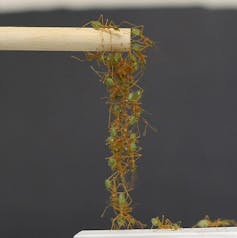
For instance, a swarm of simple, cheap and largely expendable robots could be deployed to autonomously explore dangerous environments such as disaster zones.
The swarm could self-assemble into structures that may help it bridge large gaps, or shore up a crumbling building – all the while locating and rescuing survivors.
Crucially, these abilities wouldn’t need to be explicitly programmed into the robots’ behavioural repertoire.
Rather, the abilities would “emerge” from simple rules about how the robots should interact with each other, allowing the swarm to adapt to new environments like never before.
Read more: These ants have evolved a complex system of battlefield triage and rescue ![]()
Chris Reid, DECRA Research Fellow, Macquarie University and Daniele Carlesso, PhD Candidate, Macquarie University
This article is republished from The Conversation under a Creative Commons license. Read the original article.
The Stella shortlist: your guide to 2021's powerful, emotional books

Editors’ note: We congratulate Evie Wyld, winner of the 2021 Stella Prize for her book The Bass Rock. Zoya Patel, Chair of the 2021 Stella Judging Panel says: “Evie Wyld has chosen each and every word with precision, building a novel that is a true work of art.”
Each year, The Stella Prize honours writing by women. Good. We’ve come a long way. We’ve a long way to go.
The 2021 shortlist encompasses contemporary fiction, historical fiction, and non-fiction, and undertakes impressive trapeze acts across genre boundaries.
The books investigate the riddle of familial duty and the cost of patriarchy; Australia’s racist colonial history; species-ism and humanity as it exists within the natural world; the devastating impact of sexual violence for victims as well as criminal justice professionals; the trauma associated with physical violence inflicted upon women.
The authors write about sacrifice, grief, mental illness, power, privilege and connectivity.
Collectively, the books are testament to the minds of thinking, writing women mapping the architecture of social and cultural change.
WINNER: The Bass Rock By Evie Wyld
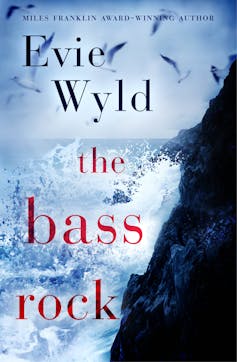
At the opening of Evie Wyld’s The Bass Rock a young girl discovers a suitcase washed up on the beach: a dead woman’s fingers inching out, and between them, an eye that blinks.
At the novel’s closing, a woman is hurriedly packing a suitcase for her and her daughter, intending to leave an abusive marriage. She is waiting for a taxi when the front door quietly closes.
These two short scenes frame a novel that dwells on the violence inflicted on three women by manipulating and aggressive men. Set on the coast of Scotland, the dark volcanic Bass Rock looms over North Berwick as a dark presence around which the stories are fashioned.
In the 21st century, Viviane is living an unpredictable existence in London, when her Uncle Christopher requests she look after the family home in North Berwick until it is sold.
Shortly after the second world war, Ruth is living in the same North Berwick house with new husband Peter and his two sons.
In the 18th century, Joseph recounts how Sarah, accused of being a witch and brutally raped by village boys, is saved from being burned by his father. But when the thugs rally support, the girl and family must run, or they could all burn.
The Bass Rock has seven sections, each containing five chapters that move from the present through to the past and back again. Themes of mental illness and grief are braided into the novel, and the young children in Ruth’s story, become the older characters in Viviane’s.
At the end of each section a short tale is recounted about a nameless woman; each woman suffering maltreatment.
This is a deeply disturbing novel, yet one also revelling in grace and the small wonders of life: new and fragile friendships, tender moments of love and unearthly happenings.
–Catherine McKinnon
Fathoms: The World In The Whale By Rebecca Giggs
Many of us enjoy venturing a few metres out into the sea to swim, surf or just cool off. Rebecca Giggs’ enthralling Fathoms: The World in the Whale presents whales as immense, enigmatic, intelligent and majestic sea creatures, but also vividly describes the intricate ecosystem of the vast oceans in which they live and die.
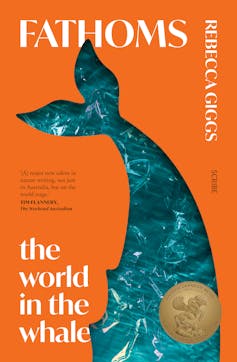
Drawing from science, history, literature, art and mythology, Fathoms is both epic in scale and rich in detail about the life cycle of whales, their behaviours and sociality.
This sweeping research is interspersed with Giggs’ own quest for understanding, which begins at a whale stranding and continues through experiences of eating whale meat and closely observing these mammals on a whale watching tour.
This makes Fathoms filled with information but also personal, as Giggs weaves her own insights and feelings about whales and the natural world into the narrative.
Arguing passionately for whales’ right to survive, many of her stories of our treatment of these creatures are heartbreaking and haunting. Whether it is humans hunting and killing whales and overfishing their food sources, or our polluting the oceans and destroying their habitats, whales remain highly vulnerable.
This could make for profoundly depressing reading. Instead, Fathoms is optimistic. We can address over-fishing, stop polluting the seas and start working seriously on restorative remediation.
This message is especially important in a year in which concern for the environment has fallen behind the issues raised by the COVID-19 pandemic.
Fathoms calls for a new “Save the Whales” campaign. Public activism has stopped most whaling and we can rise to this new challenge, in the process also safeguarding countless numbers of no less important sea creatures.
–Donna Lee Brien
Revenge: Murder In Three Parts By S. L. Lim
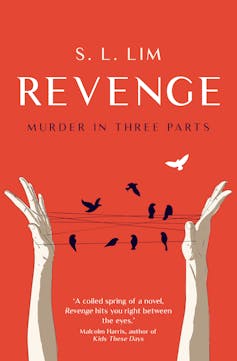
Revenge: Murder in Three Parts has a vortex-like rhythm, with its gut-wrenching tale about the cost of fortitude and self-sufficiency.
If you break between sittings, you are likely to dream in the way narrative wires us to dream: circling standalone memories that never stand alone in the mind’s eye, turning time inside out.
Yannie lives in Malaysia, her life largely devoted to caring for her parents.
Despite her intellectual feats, which exceed her brother’s exponentially, her parents tell her they can’t afford to send her to university. They have agreed to provide additional support for Yannie’s brother to undertake further study. He, too, betrays Yannie.
The reader falls for Yannie, wanting to know and unknow her in the way we want to unknow all of those things we know innately and immediately yet incompletely.
Yannie is highly emotionally intelligent, artistic and thoughtful. Her everyday practice is self-denial. The word “entropy” emerges literally and metaphorically throughout the novel. Lim invites us to consider the ramifications of the slow seep of unused energy, the cost of duty and sacrifice, deep inequity, unrequited longing.
Revenge is an unflinching investigation of how a life cultivates a mind. Lim pushes us to consider the enduring and sometimes devastating impact of missed moments and our thinking upon them.
Books that do not end, and will never end, leave us with questions. At the heart of this book is the following question: “What does it take, to see and not see […] at the same time?”
–Julia Prendergast
The Animals In That Country By Laura Jean McKay
The Animals in that Country is that rare thing: an intellectually ambitious, formally innovative Australian novel that is accessible to a broad readership. It’s also wonderfully macabre.
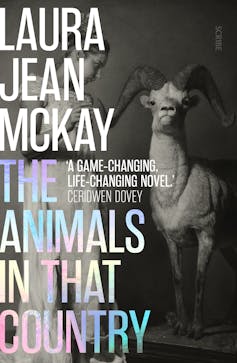
The central character is Jean, a mature-aged alcoholic working her way up at a remote wildlife park. She used to clean the dunnies, now she drives the little tourist train.
Jean’s ambition is to become a ranger, but anyone can see she’s incapable of completing the required certificate. Her boss changes the subject whenever it comes up.
Jean has one sober day per week: it’s a massive effort, but it’s a service in aid of maintaining her primary human relationship with her six-year-old granddaughter, Kimberly.
Kimberly and Jean love animals. They work tirelessly together on a scrapbook filled with plans for their own animal park. The relationship between these two is precious, refreshingly full and beautifully rendered by McKay: cementing Jean, despite all her faults, as a heroine with true heart.
I was surprised at how bloody funny this book is. The first 50 pages move a little slowly, and at times the Aussie vernacular is too over-cooked, even for comic effect, but once Jean hits the road in pursuit of Kimberly, who has been stolen by her mother’s ex, the narrative takes a sophisticated turn and the book’s extraordinary, slightly surreal central project, takes off. Down the highway, we’re in the realm of horror.
This is a work of fiction utterly capable of swaying the cultural imaginary.
McKay completed this novel as part of a creative writing PhD at the University of Melbourne, and it is a testament to the quality of writing coming out of Australia’s higher-degree writing programs: well-researched, impeccably crafted, and, above all, intelligent.
–Julienne van Loon
Witness By Louise Milligan
Sexual assault and murder carry high maximum sentences for good reason. They cause damage, havoc and lifelong pain and can rip society apart. None of us want perpetrators to stay hidden and unjudged. We want the criminal justice system to do its work.
And so, when victims of sexual assault envy murder victims “because they don’t have to relive being killed, over and over”, when what finally breaks them is not the crime but what happens next, we all have a stake in making justice work better.

In Witness, Louise Milligan asks where is the balance to be struck between the rights of defendants and the rights of witnesses – and of complainants in particular.
Can we presume an accused person to be innocent – as she agrees we should – without irreparably damaging the lives of those who report sexual crimes and give evidence?
Milligan has the credentials: court reporter; investigative journalist; witness in the trial of Cardinal George Pell; and the victim of the crime committed by an invisible stranger who repeatedly threatened to kill her.
Milligan has clearly earned the trust not only of victims, but also of judges and senior barristers who speak candidly about the impact of vicarious trauma on them and their colleagues, and who know they are working in an imperfect system.
She writes about the “cognitive dissonance” required for a barrister to be able to belittle a child witness, ultimately proved to be telling the truth about sexual abuse, and then go home to their own children.
Witness is a harrowing read. Not because Milligan has sensationalised the experiences described to her: the court transcripts speak for themselves. But because she exposes the damage done, not only to complainants, but to everyone involved in the criminal justice system, and makes it our concern.
-Julia Prendergast
Stone Sky Gold Mountain By Mirandi Riwoe
Stone Sky Gold Mountain is a bellwether novel, acknowledging Australia’s racist colonial history, suggesting that settlers from many countries were complicit in the worst outrages against Indigenous people, and underlining centuries of attack and control of women by men.
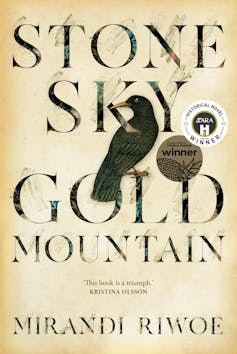
Set in 1877 in Queensland’s Palmer River goldfields the novel imagines a gap in Australian history, bringing to the foreground young working women, shackled by class, gender and race, seeking freedom and tenderness in a violent shanty town.
The story begins with the exiled Lai Yue and his sister Ying questing for gold to free their siblings, sold into slavery to pay their father’s gambling debts; and with the grieving and myopic Meriem, a single mother keeping house for a whore.
Ying dresses as a boy to survive. Meriem and her employer Sophie ply traditional women’s trades – housekeeping and sex work – and the three defend each other.
We fear for Lai Yue, burdened with filial duty, paying the price of men’s brutality to each other. Chinese speculators outnumber Europeans yet remain vulnerable to racism, their homeland criminal gangs, known as tongs, and starvation. Is Ying’s brother enlivened only by conscience, or is his inner voice darker, more unsettling than that? Who is responsible when an explosion of frontier violence subsumes him?
Taken deep into each character’s consciousness, we absorb their trauma and resilience.
The bush and riverscape seethe with heat and humidity. Riwoe’s language is assured, lyric and lush with vivid imagery of transplanted Chinese culture.
Historical detail is always immediate and visceral. As befits a good crime novel, each chapter cranks up tension, escalates action, and coded objects – a green ribbon tied around a tree, blackbirds, snakes’ eyes and sour plums, talismanic wood carvings – lead readers towards inevitable climaxes.
Ghosts and opium memes bring foreboding. How does one tell white men apart when they all look the same? Ever ironic, Riwoe. Read in two sittings. Twice.
–Gay Lynch
The 2021 Stella Prize winner will be announced online at 7pm AEST tonight, April 22.![]()
Julia Prendergast, Senior Lecturer, Writing and Literature, Swinburne University of Technology; Catherine McKinnon, Discipline Leader—English and Creative Writing, University of Wollongong; Donna Lee Brien, Emeritus Professor, Creative Industries, CQUniversity Australia; Gay Lynch, Adjunct academic in Creative Writing and English, Flinders University, and Julienne van Loon, Associate Professor, Writing and Publishing, School of Media & Communication, RMIT University
This article is republished from The Conversation under a Creative Commons license. Read the original article.
Heroes, villains ... biology: 3 reasons comic books are great science teachers

People may think of comics and science as worlds apart, but they have been cross-pollinating each other in more than ways than one.
Many classic comic book characters are inspired by biology such as Spider-Man, Ant-Man and Poison Ivy. And they can act as educational tools to gain some fun facts about the natural world.
Some superheroes have scientific careers alongside their alter egos. For example, Marvel’s The Unstoppable Wasp is a teenage scientist. And DC Comics’ super-villain Poison Ivy is a botanist who saved honey bees from colony collapse.
Superheroes have also crept into the world of taxonomy, with animals being named after famous comic book characters. These include a robber fly named after the Marvel character Deadpool (whose mask looks like the markings on the fly’s back) and a fish after Marvel hero Black Panther.
Read more: From superheroes to the clitoris: 5 scientists tell the stories behind these species names
I am a PhD student researching bee behaviour and I have spent most of my university life working at a comic book store. Here’s how superheroes could be used to make biology, and other types of science, more intriguing to school students.
1. They’re Engaging
Reading has a range of benefits, from improved vocabulary, comprehension and mathematics skills, to increased empathy and creativity.
While it’s hard to directly prove the advantages of comics over other forms of reading, they can be engaging, easy to understand learning tools.
Comics have similar benefits to classic textbooks in terms of understanding course content. But they can be more captivating.
A study of 114 business students showed they preferred graphic novels over classic textbooks for learning course content.
In another study in the United States, college biology students were given either a textbook or a graphic novel — Optical Allusions by scientist Jay Hosler, that follows a character discovering the science of vision — as supplementary reading for their biology course.
Both groups of students showed similar increases in course knowledge, but students who were given the graphic novel showed an increased interest in the course.
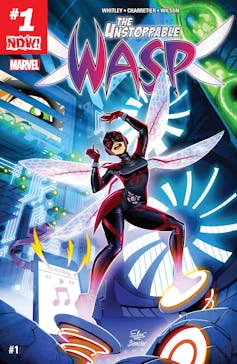
So, comics can be used to engage students, especially those who aren’t very interested in science.
Educational comics such as the Science Comics series, Jay Hosler’s The Way of the Hive and Abby Howard’s Earth Before Us series frequently have a narrative structure with a story consisting of a beginning, middle and resolution.
Students often find information inside storytelling easier to comprehend than when it’s provided matter-of-factly, such as in textbooks. As readers follow a story, they can use key information they have learnt along the way to understand and interpret the resolution.
2. They Teach Important Concepts
In science-related comic books, as the story unfolds, scientific concepts are often sprinkled in along the way. For example, Science Comics: Bats, follows a bat going through a rehabilitation clinic while suffering from a broken wing. The reader learns about different bat species and their ecology on this journey.
Comics also have the advantage of permanance, meaning students can read, revisit and understand panels at their own pace.
Many science comics, including Optical Allusions, are written by scientists, allowing for reliable facts.
Using storytelling can also humanise scientists by creating relatable characters throughout comics. Some graphic novels showcase scientific careers and can be a great tool for removing stereotypes of the lab coat wearing scientist. For example, Jim Ottaviani and Maris Wick’s graphic novels Primates and Astronauts: Women on the Final Frontier showcase female scientists in labs, the field and even space.
The Marvel series’ Unstoppable Wasp also includes interviews with female scientists at the end of each issue.
3. They Can Give A Visual Insight Into Strange Worlds
Imagery combined with an easy to follow narrative structure can also give a look into worlds that may otherwise be hard to visualise. For example, Science Comics: Plagues, and the Manga series, Cells at Work!, are told from the point of view of microbes and cells in the body.
Imagery can also show life cycles of animals that are potentially dangerous, or difficult to encounter, such as a honeybee colony, which was visualised through Clan Apis.
The author would like to acknowledge neuroscientist and cartoonist Matteo Farinella, whose advice helped shape this article.![]()
Caitlyn Forster, PhD Candidate, School of Life and Environmental Sciences, University of Sydney
This article is republished from The Conversation under a Creative Commons license. Read the original article.
Long COVID: What Is It And What Do We Know About It?
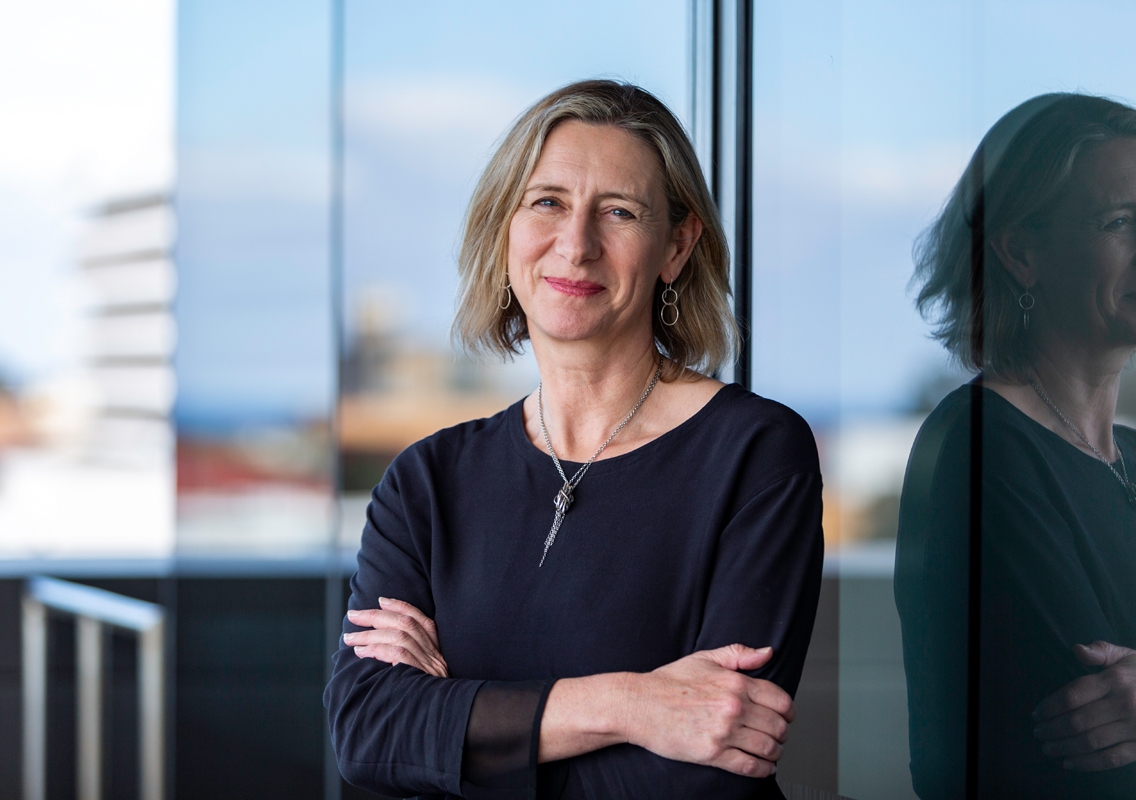
Disrupted Sleep Is Linked To Increased Risk Of Early Death; Particularly In Women
UNSW: Mystery Of Photosynthetic Algae Evolution Finally Solved
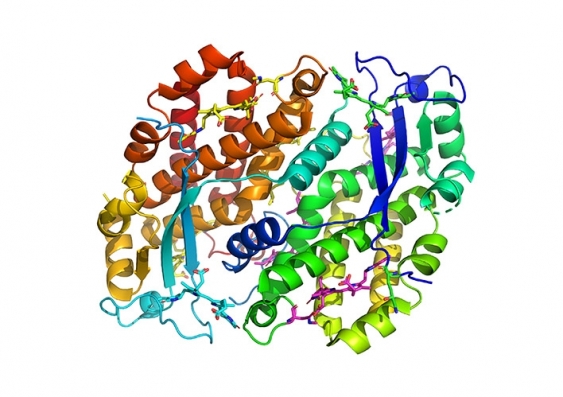
NSW Government Accelerates Assessment Of Warehouses And Data Centres
Inaugural David Cooper Lecture: Dr Anthony Fauci
Flagship Strategy To Support NSW Veterans
 The service and sacrifices of veterans and their transition from military to civilian life are in focus with the NSW Government launching the State’s first whole-of-government strategy, developed using insights and expertise from ex-serving personnel and their families.
The service and sacrifices of veterans and their transition from military to civilian life are in focus with the NSW Government launching the State’s first whole-of-government strategy, developed using insights and expertise from ex-serving personnel and their families.World-Class Equine Training Academy In Scone
Mad Max Prequel Furiosa To Be Filmed In NSW

Australia's Outback Radio Telescope Discovers Dense Star
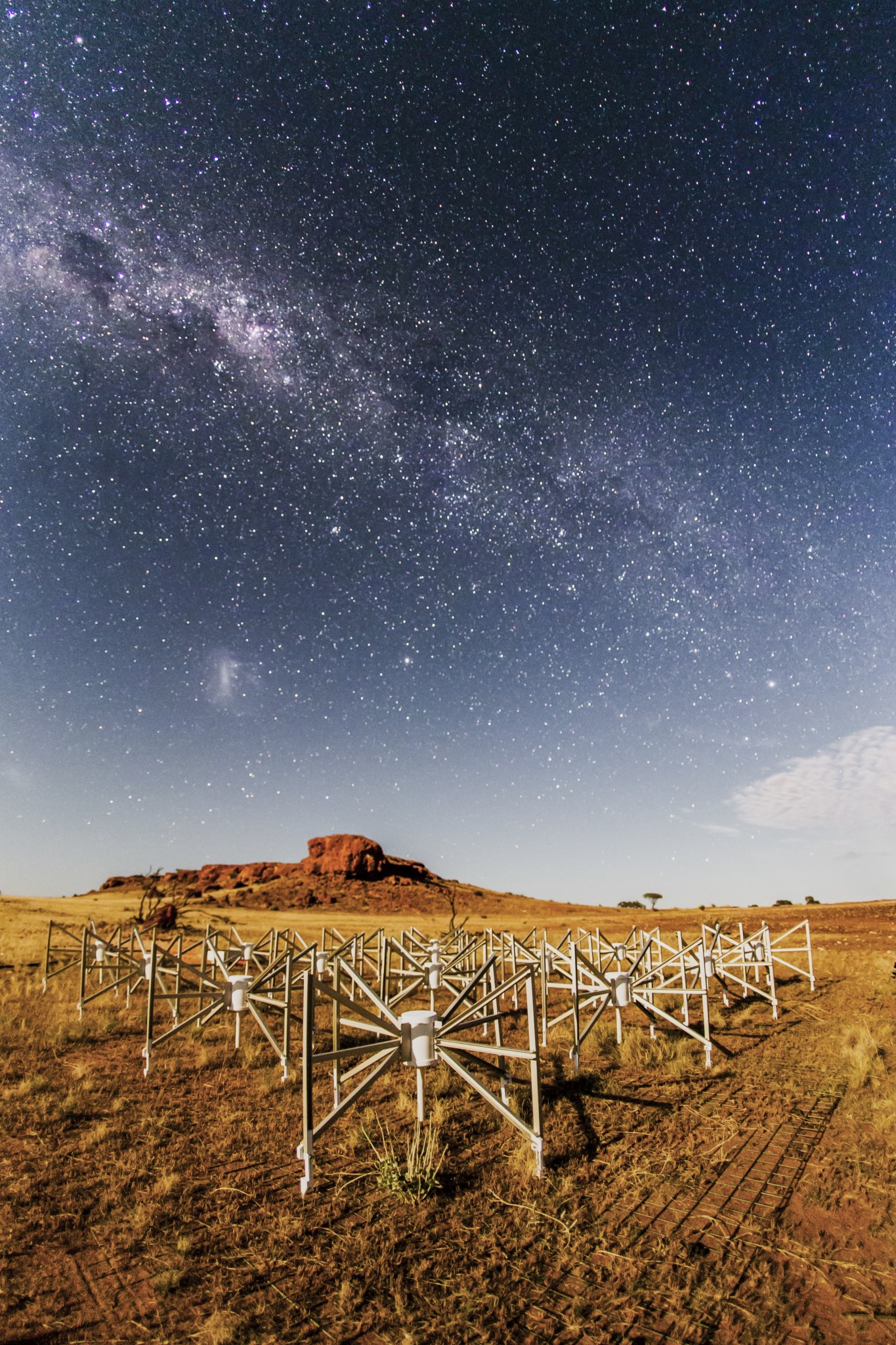
Disclaimer: These articles are not intended to provide medical advice, diagnosis or treatment. Views expressed here do not necessarily reflect those of Pittwater Online News or its staff.